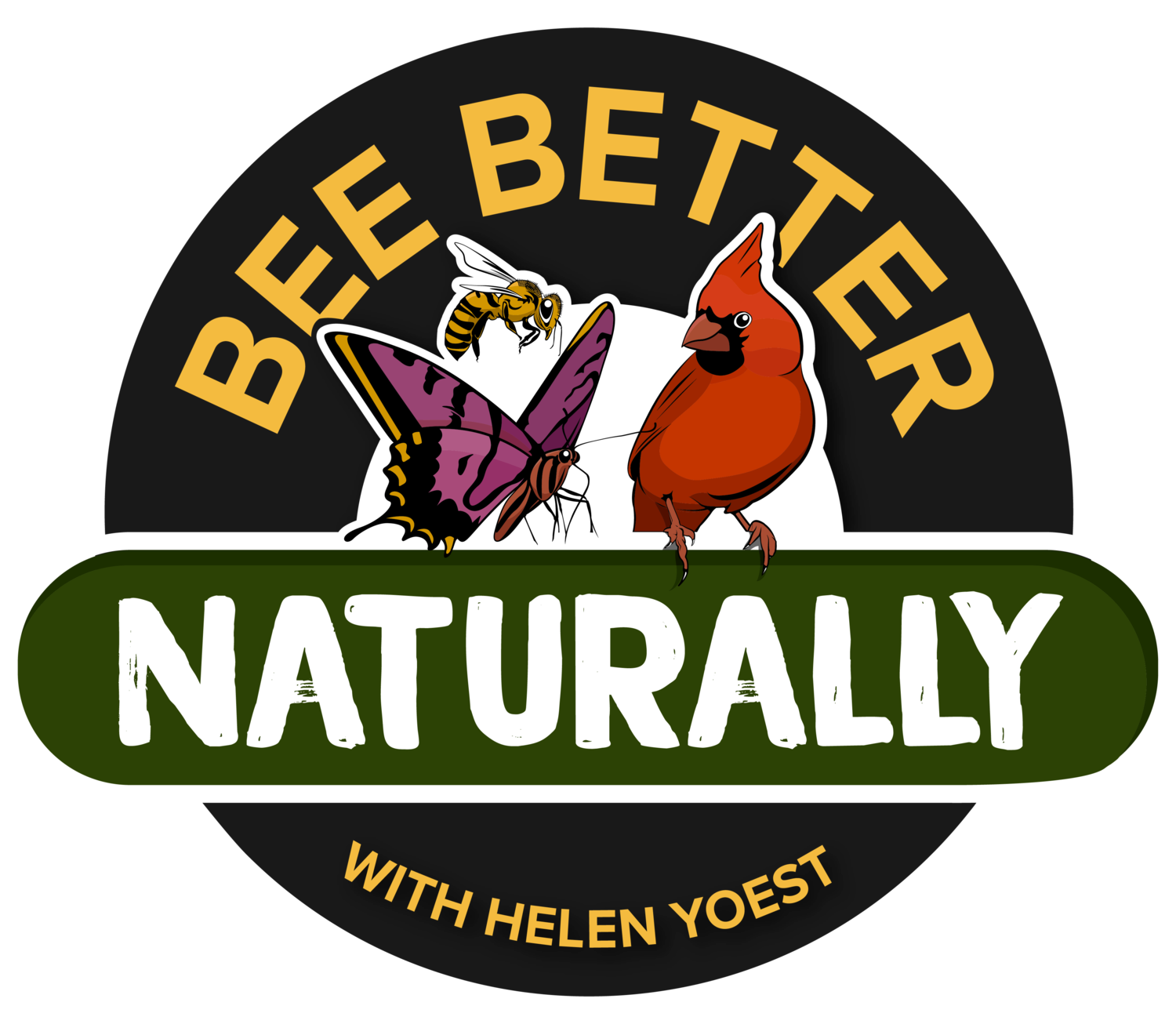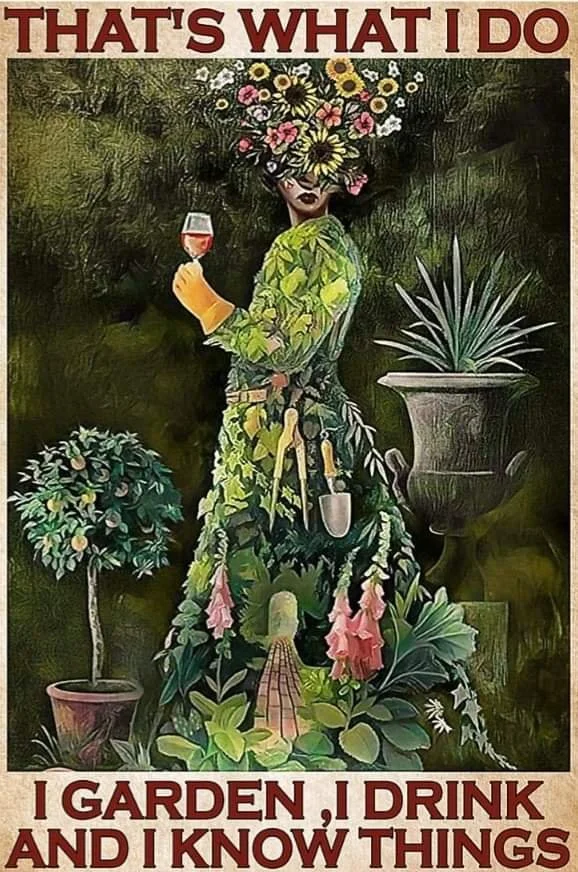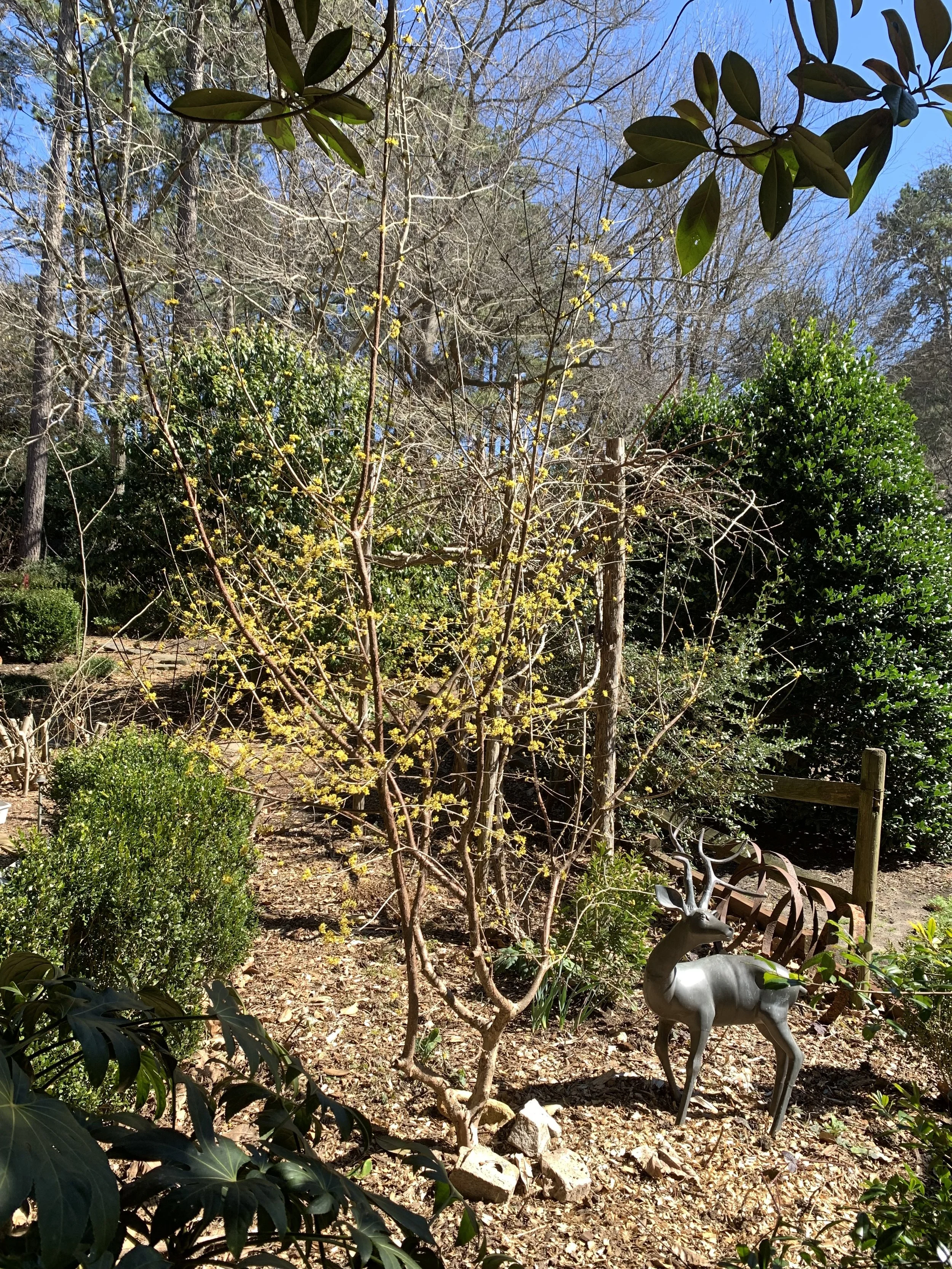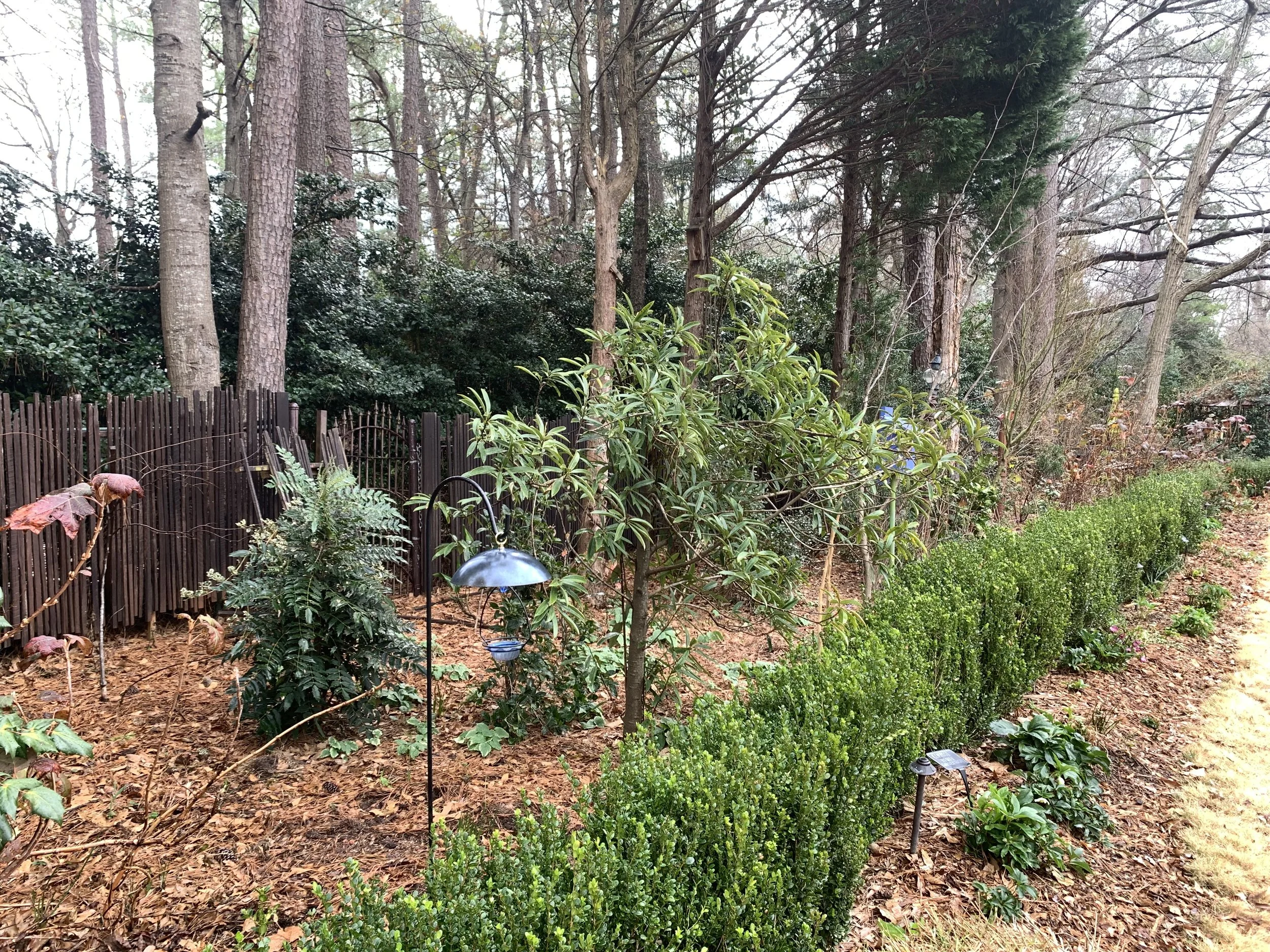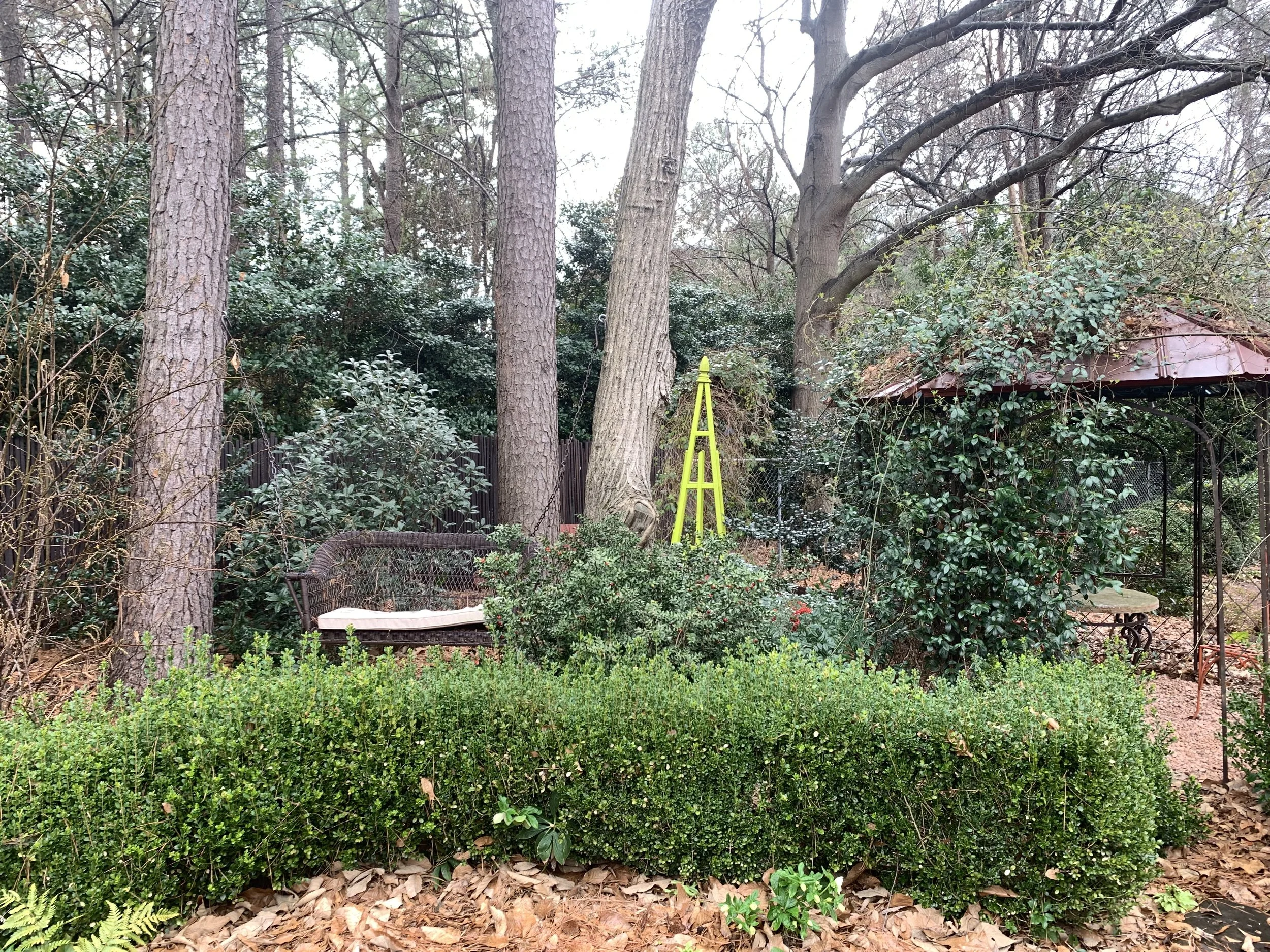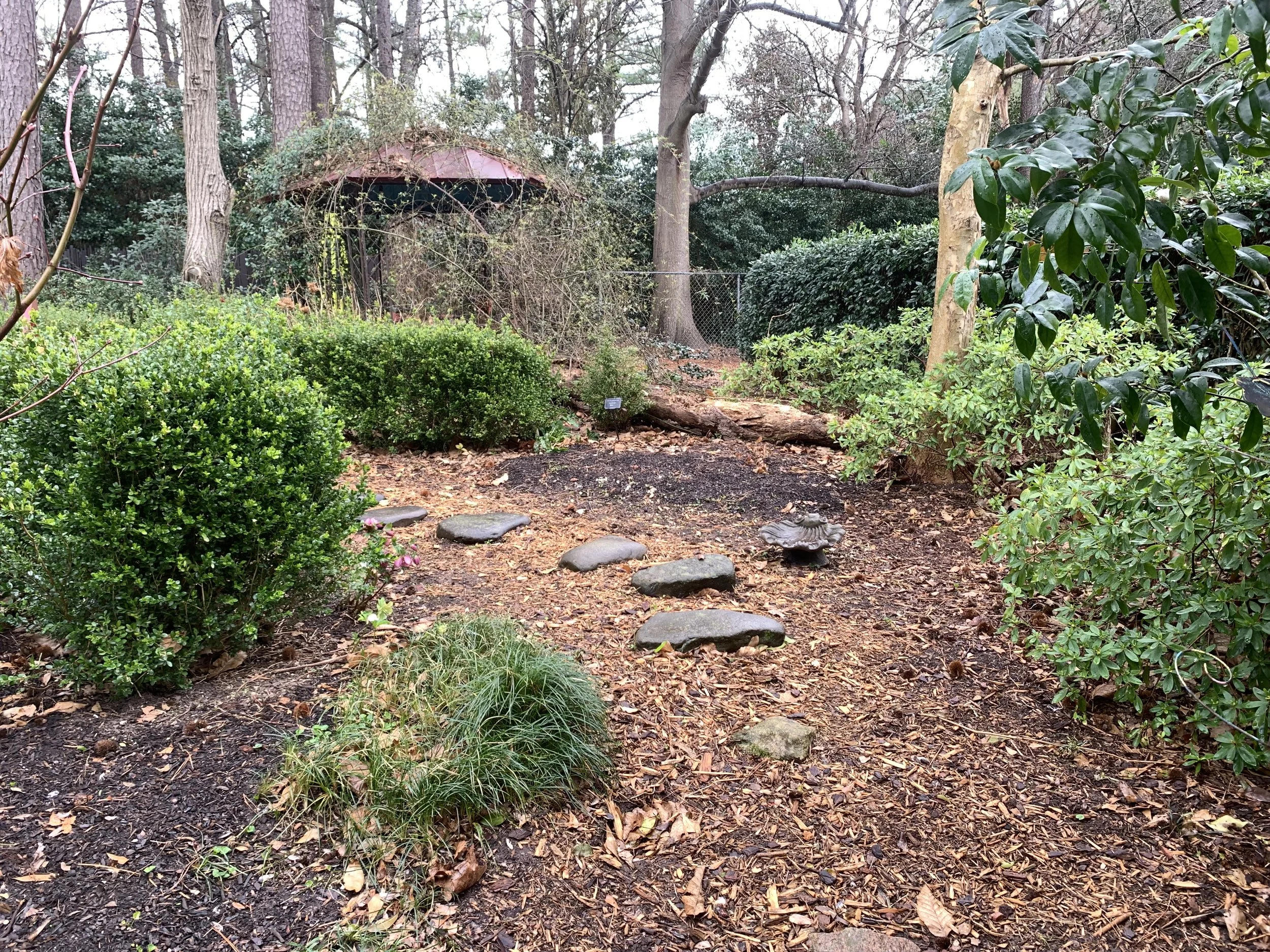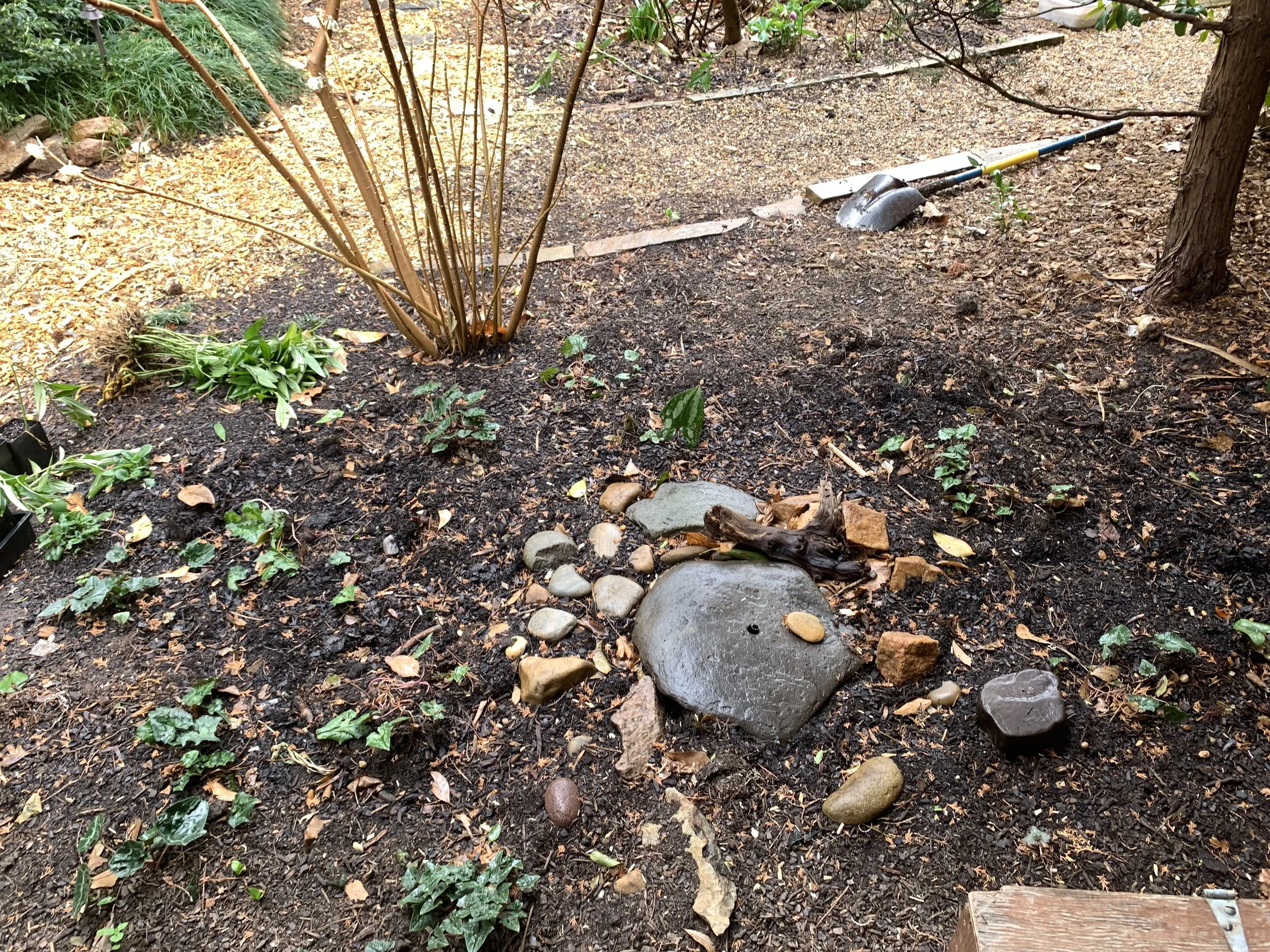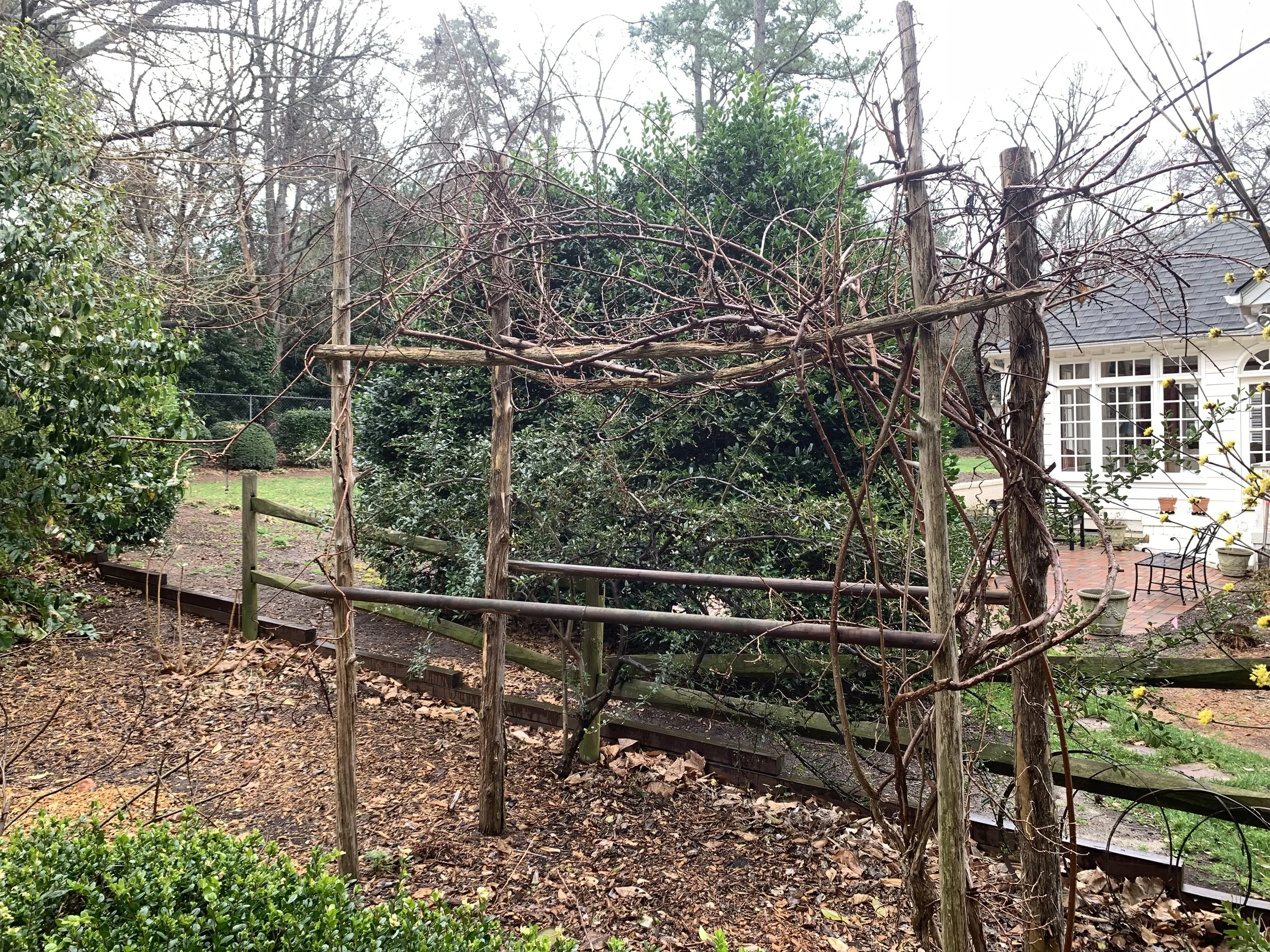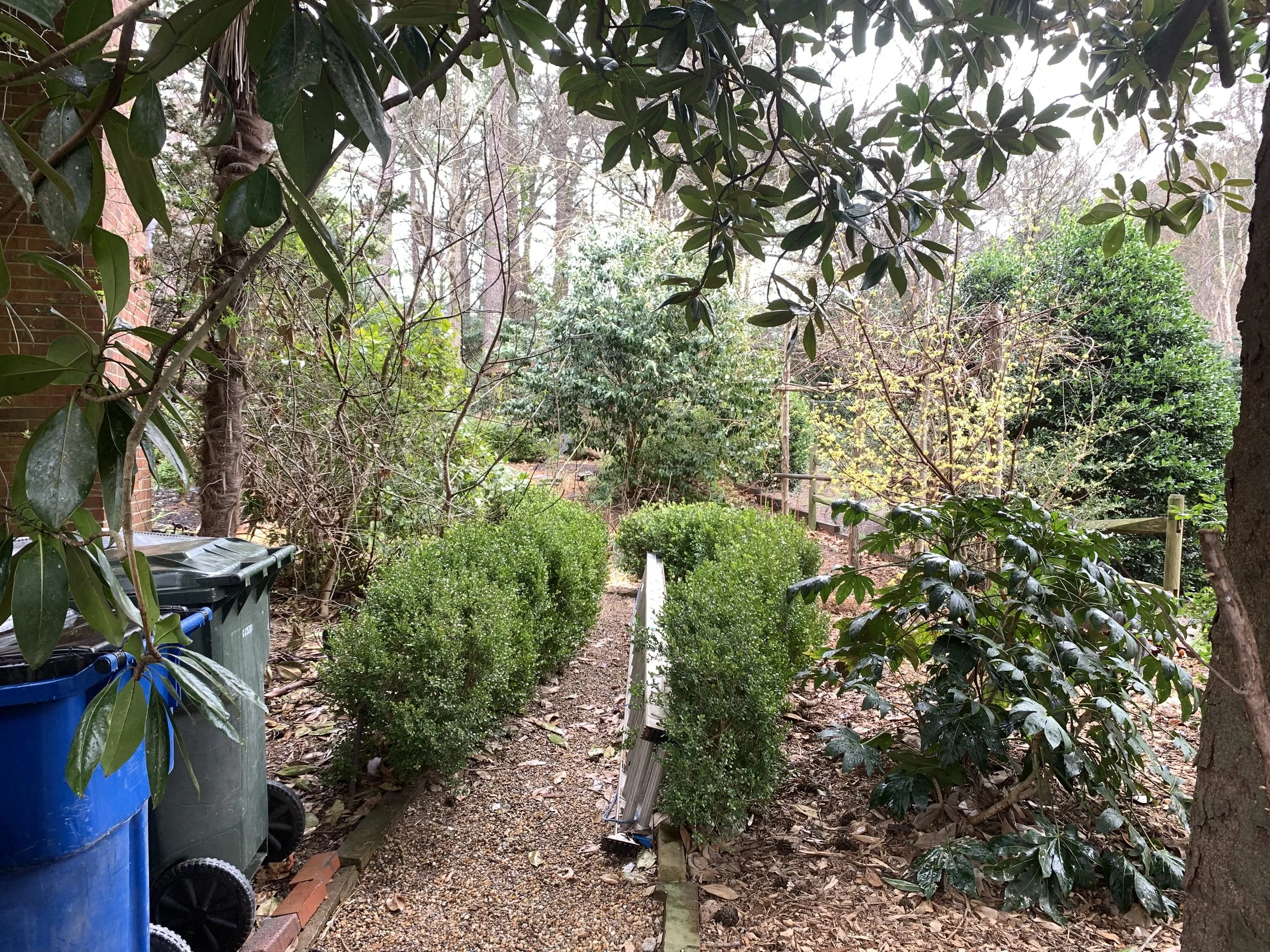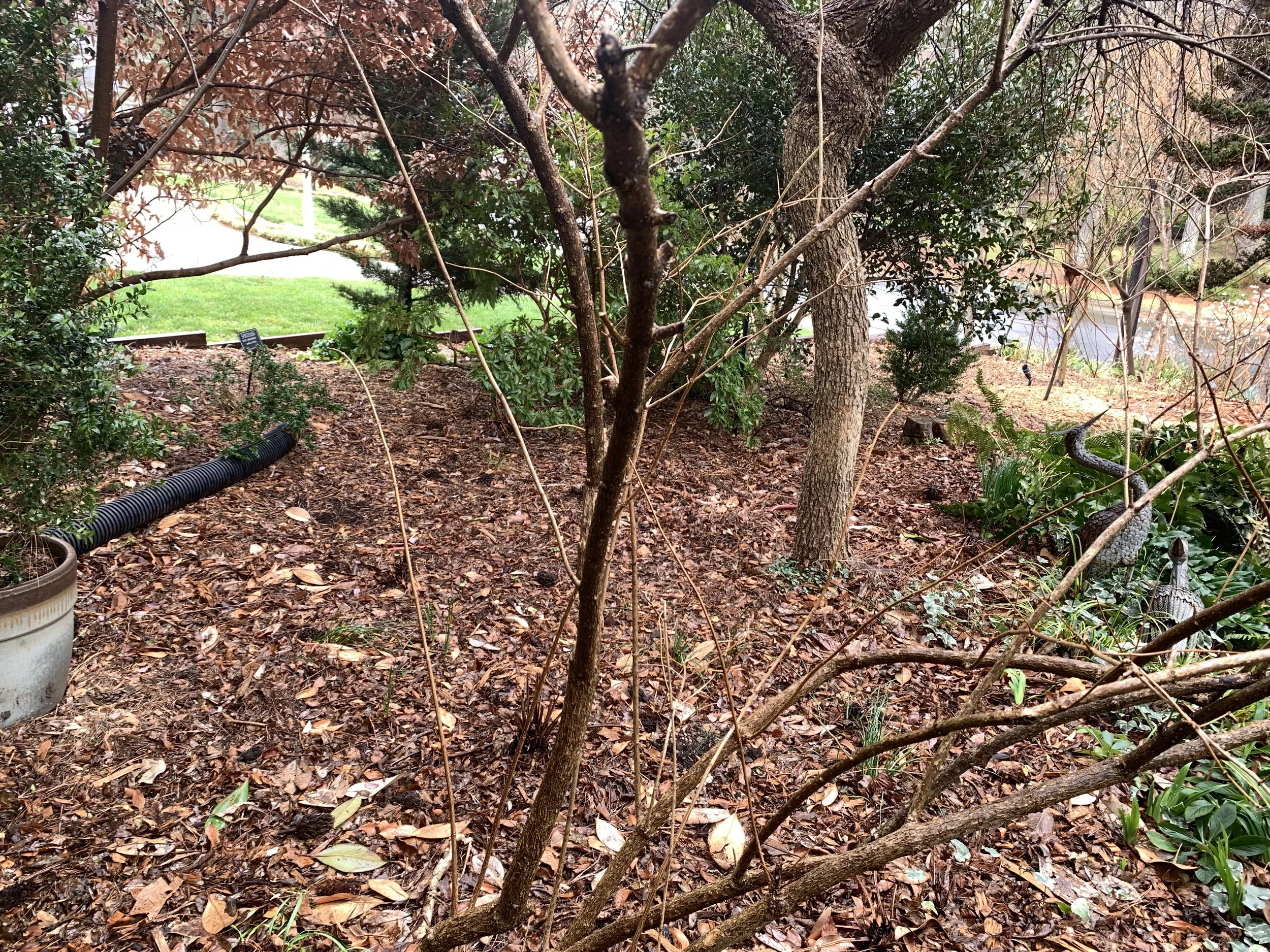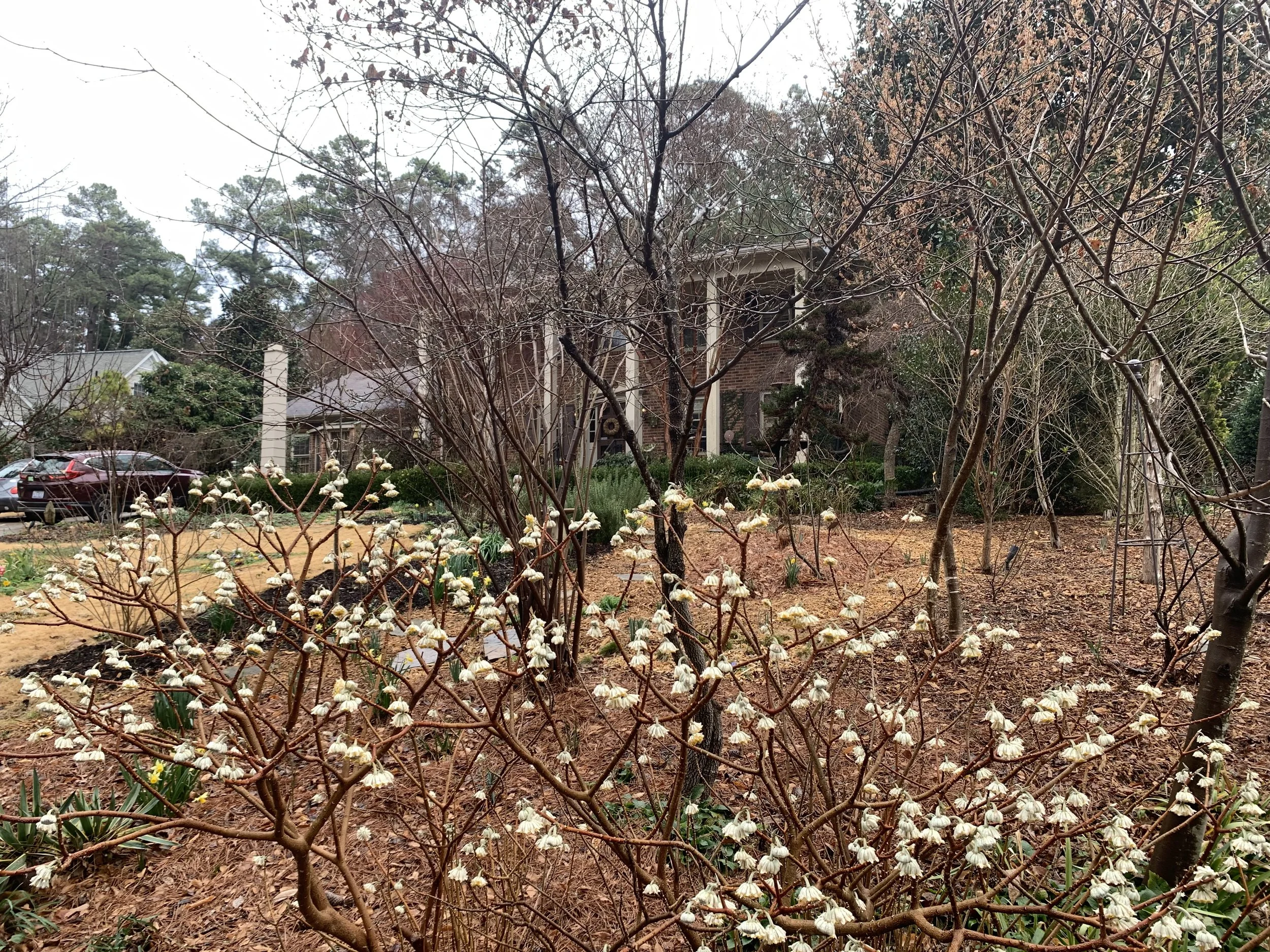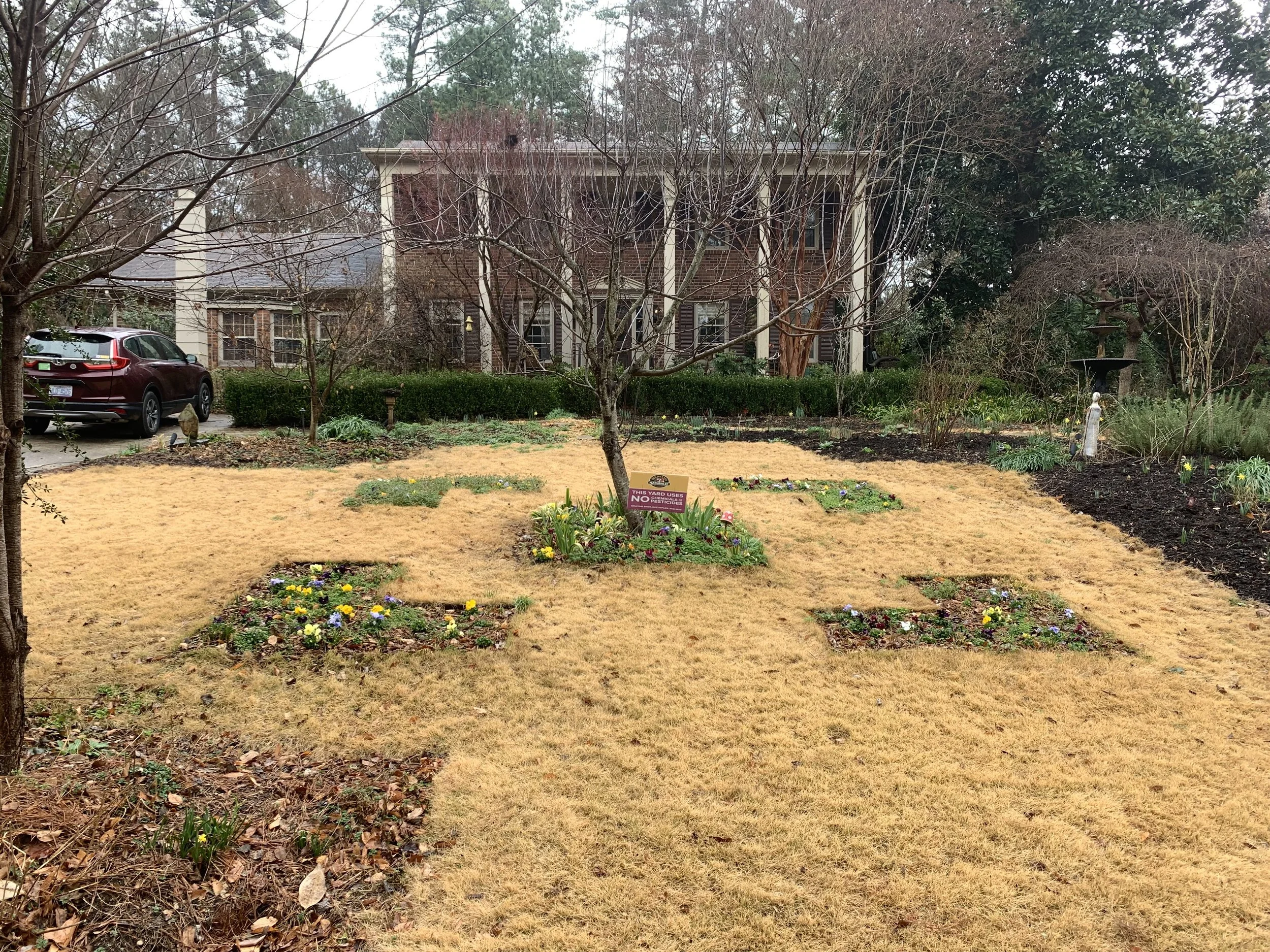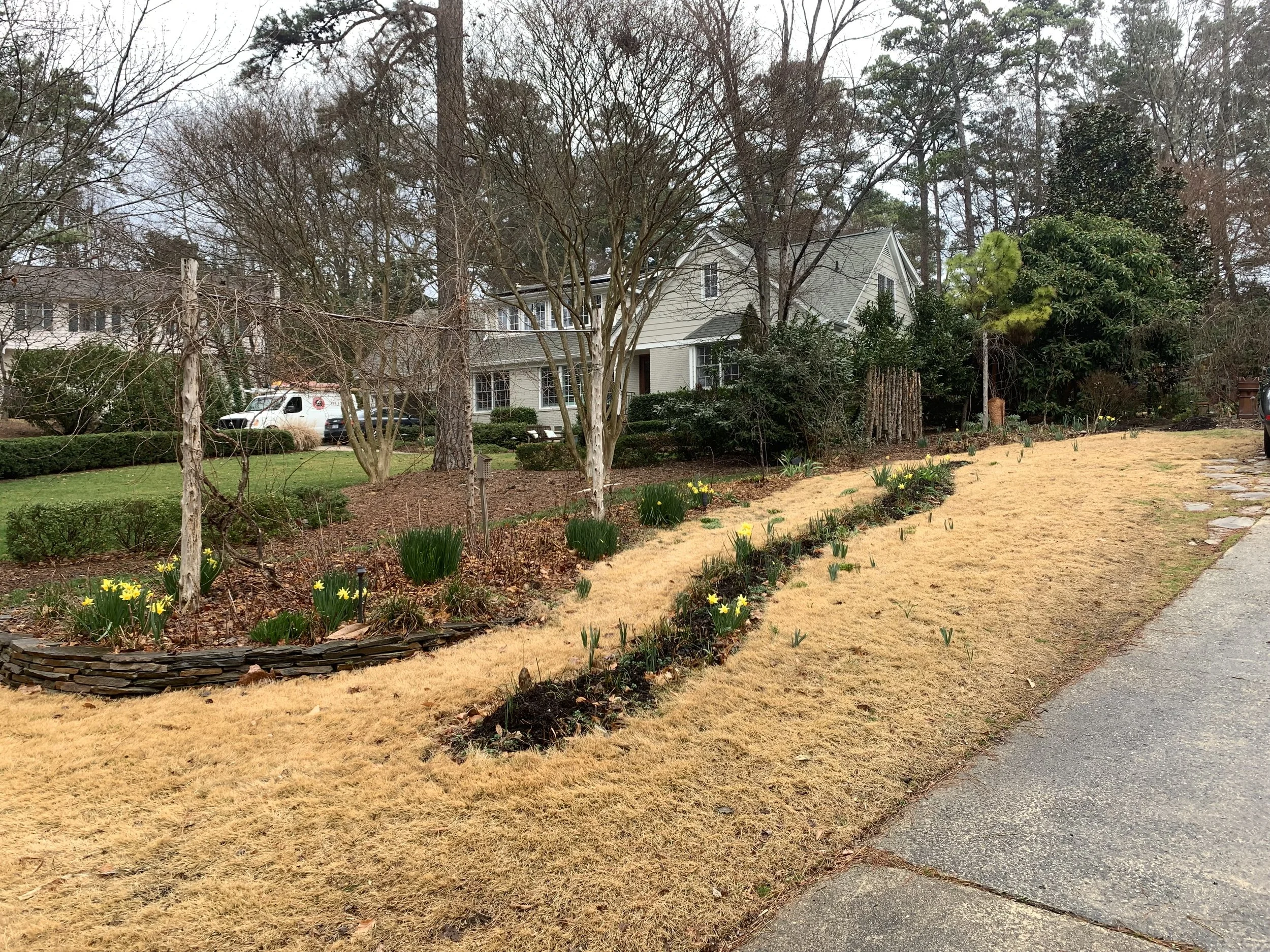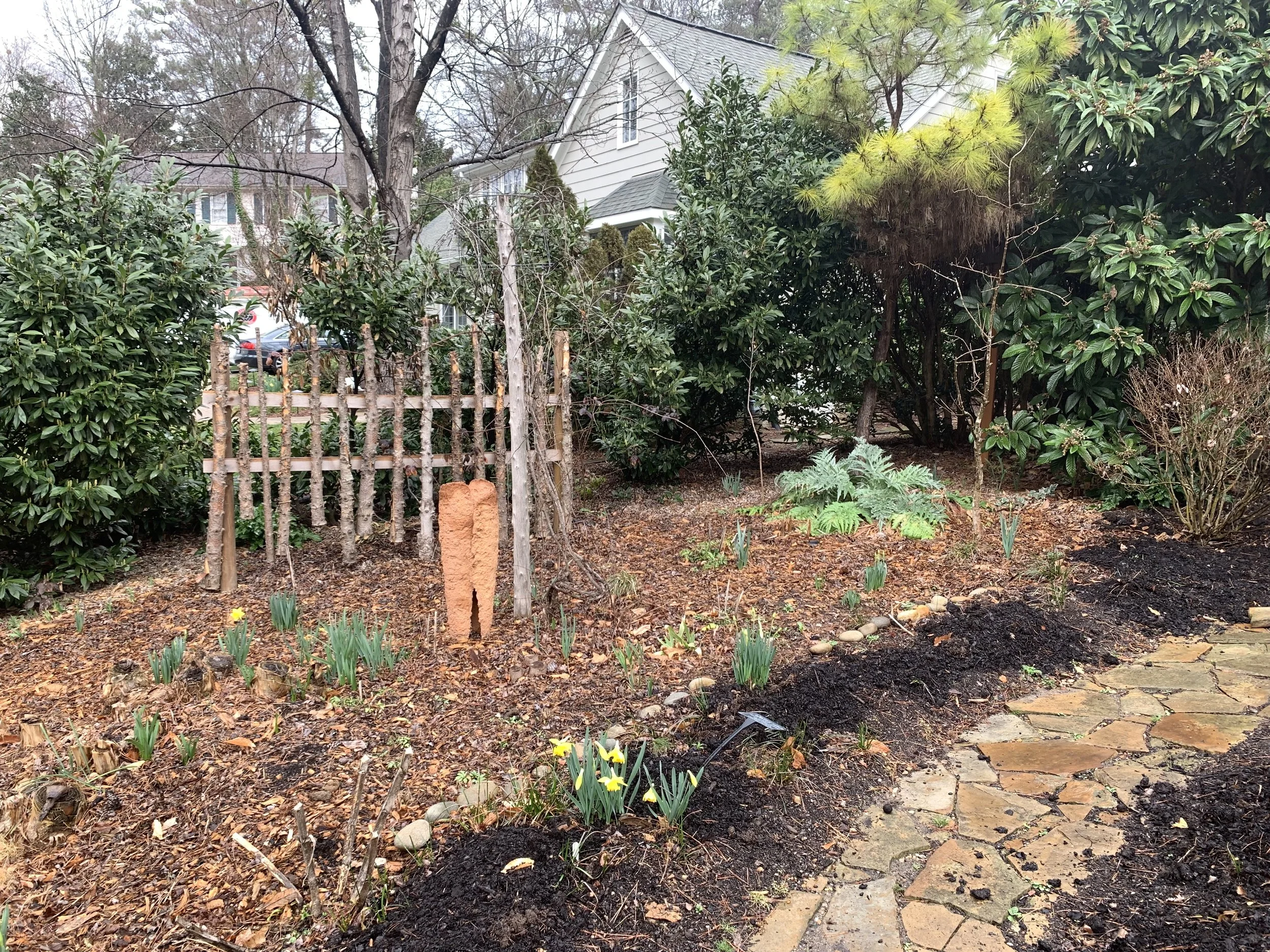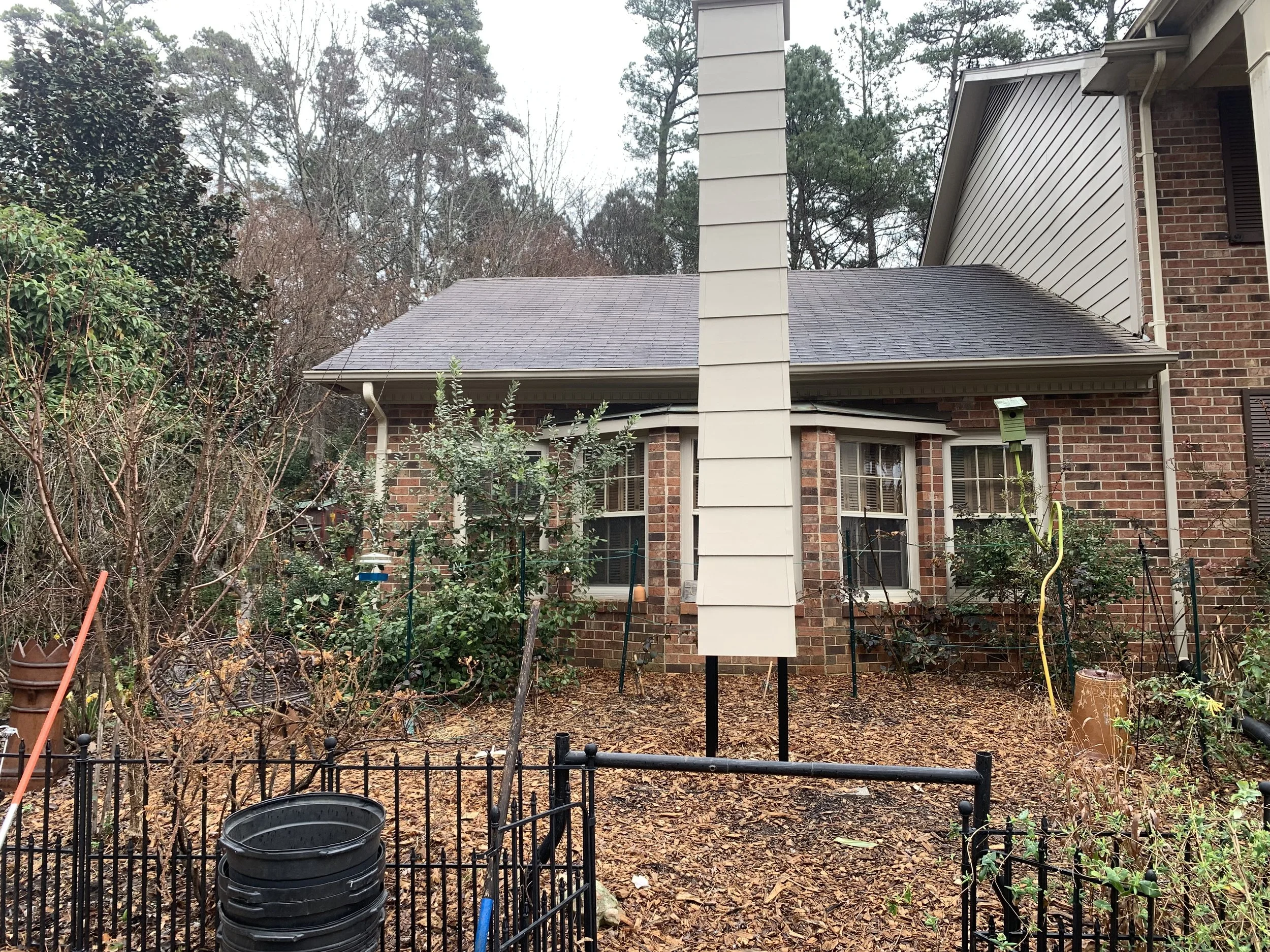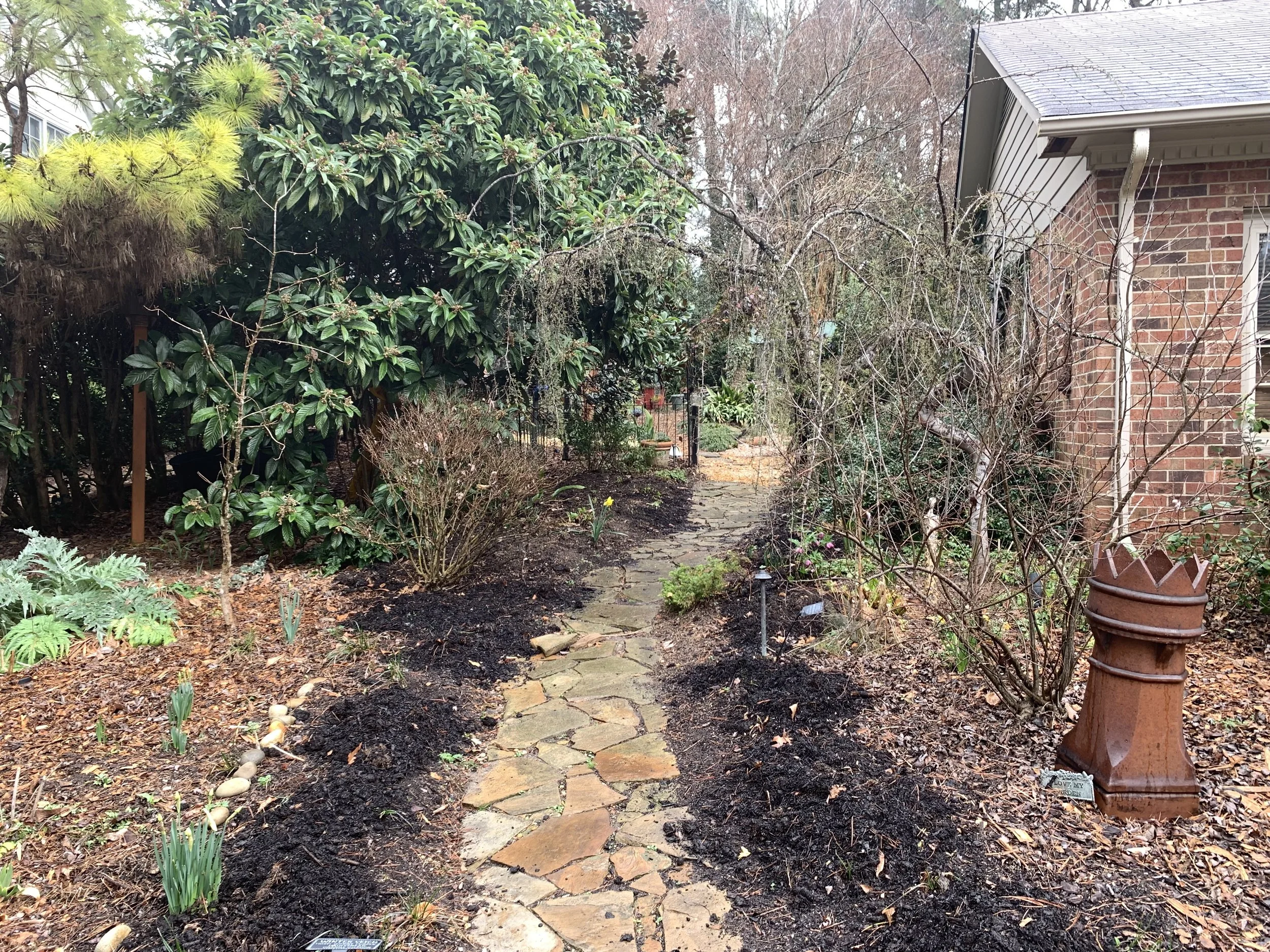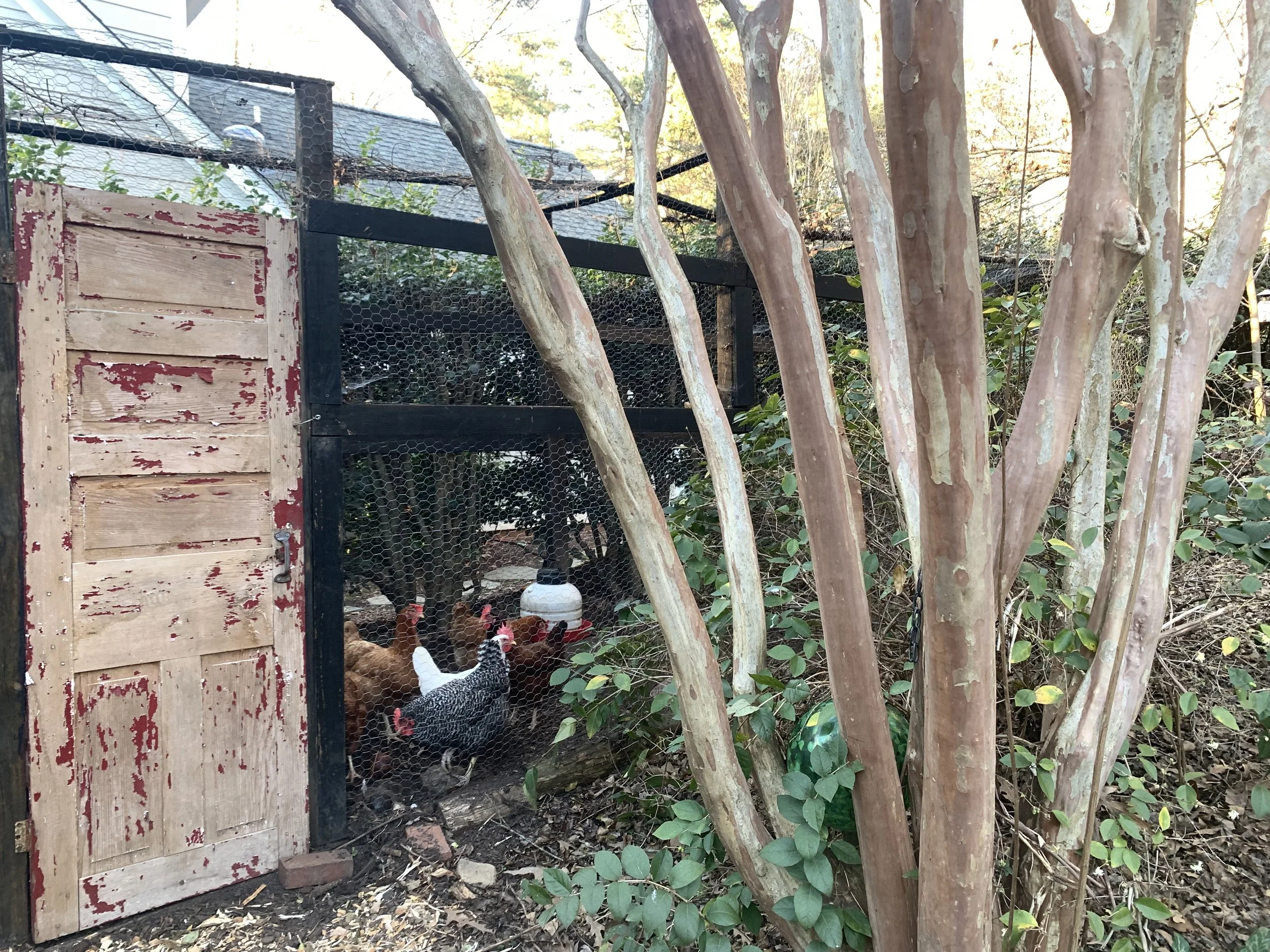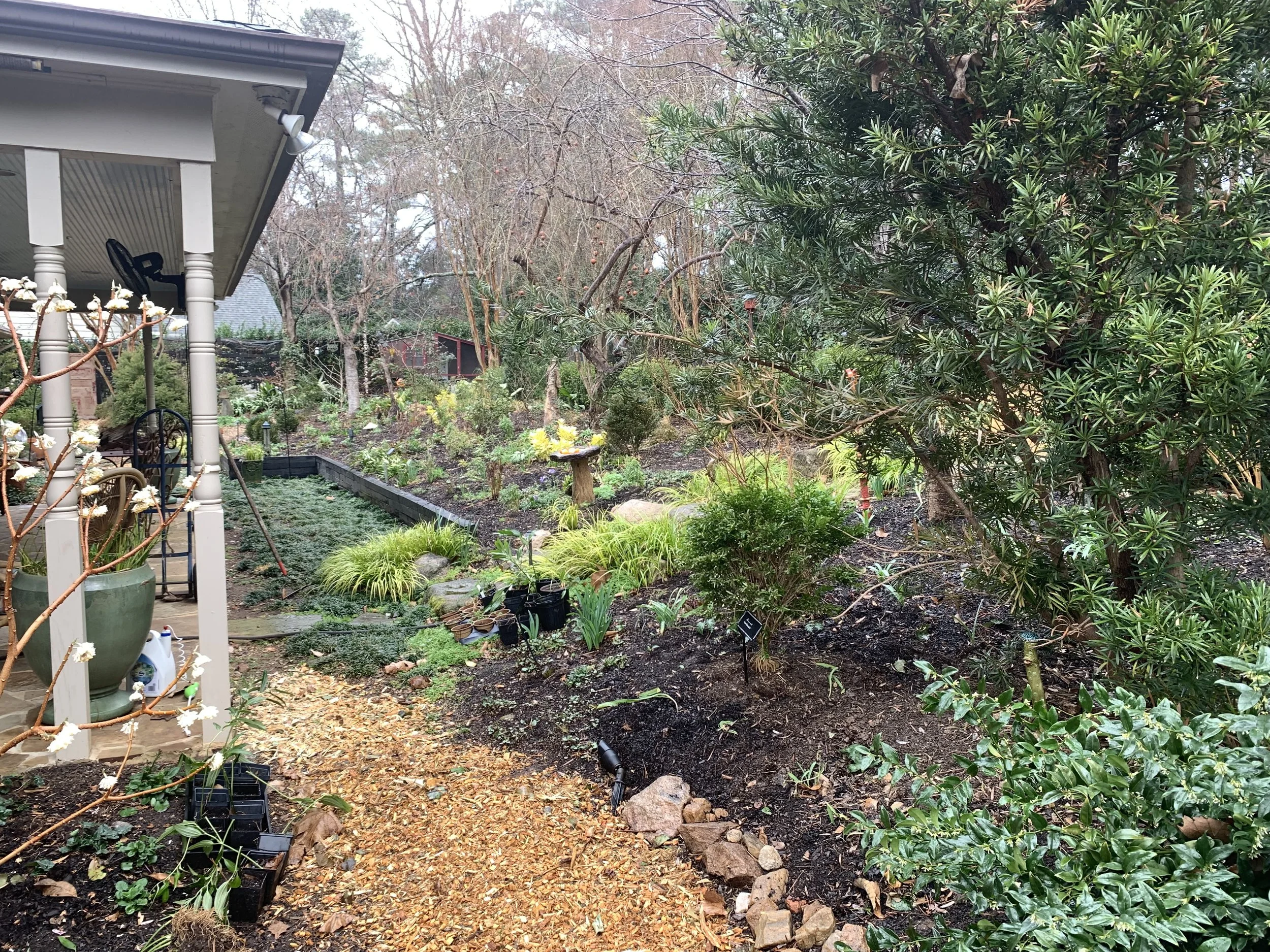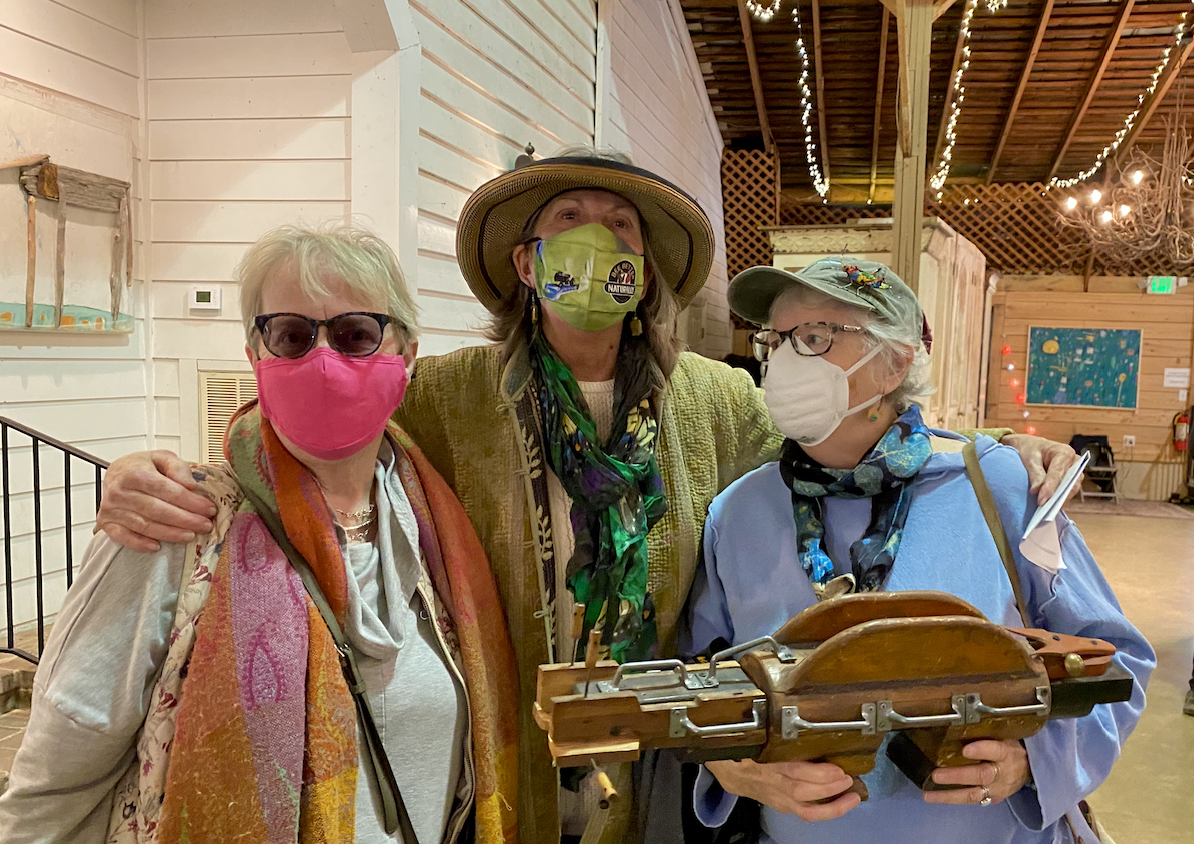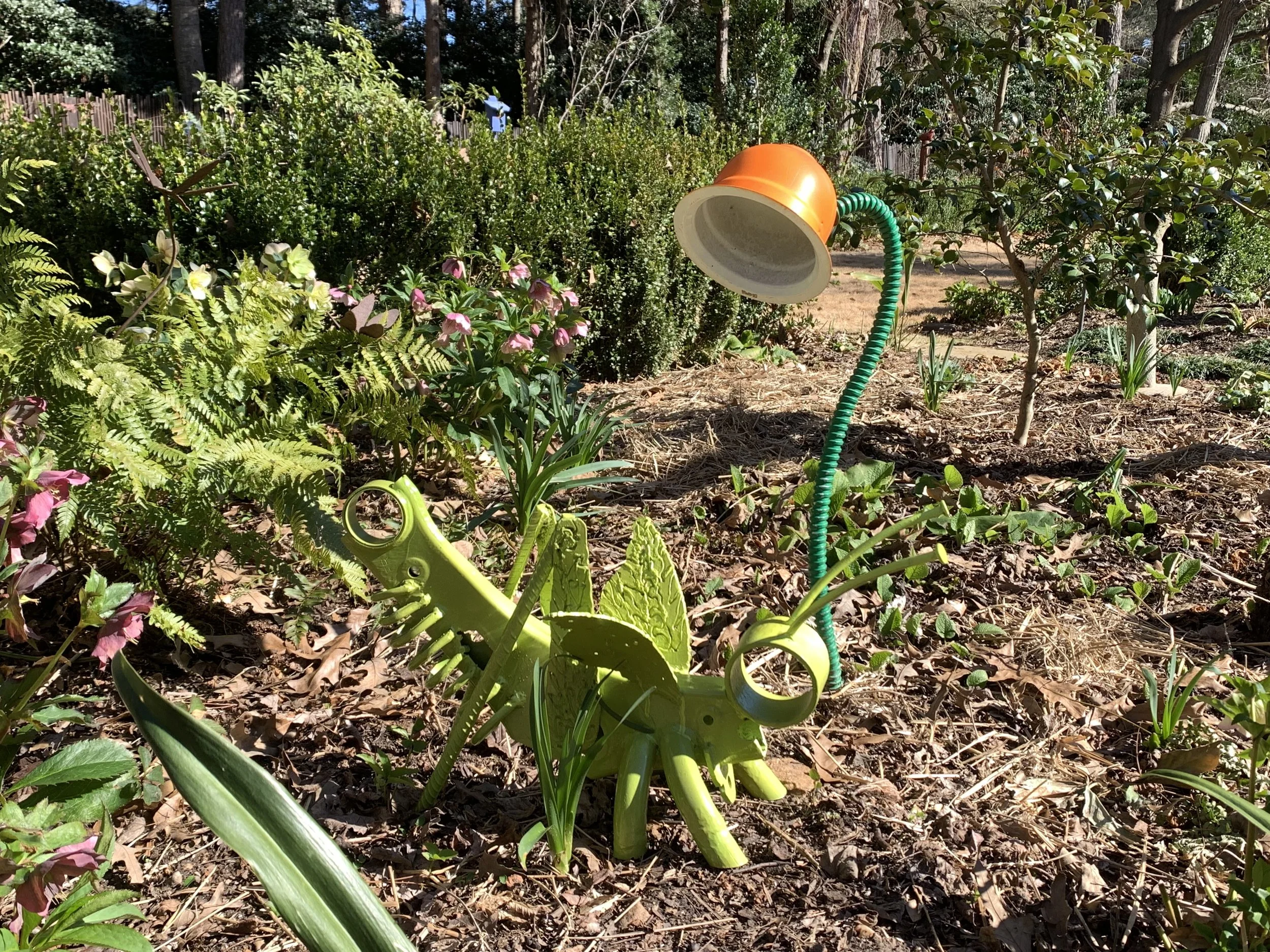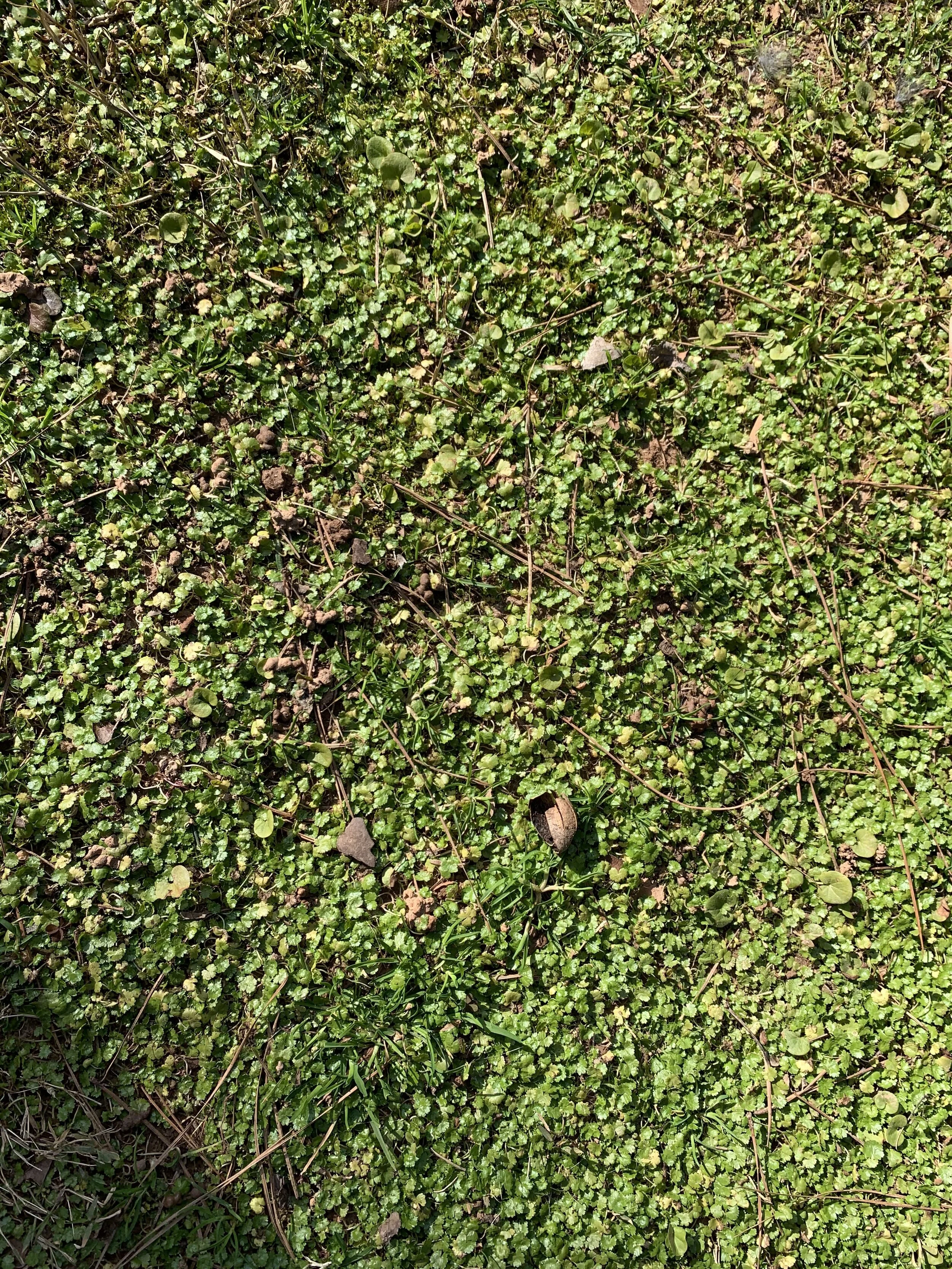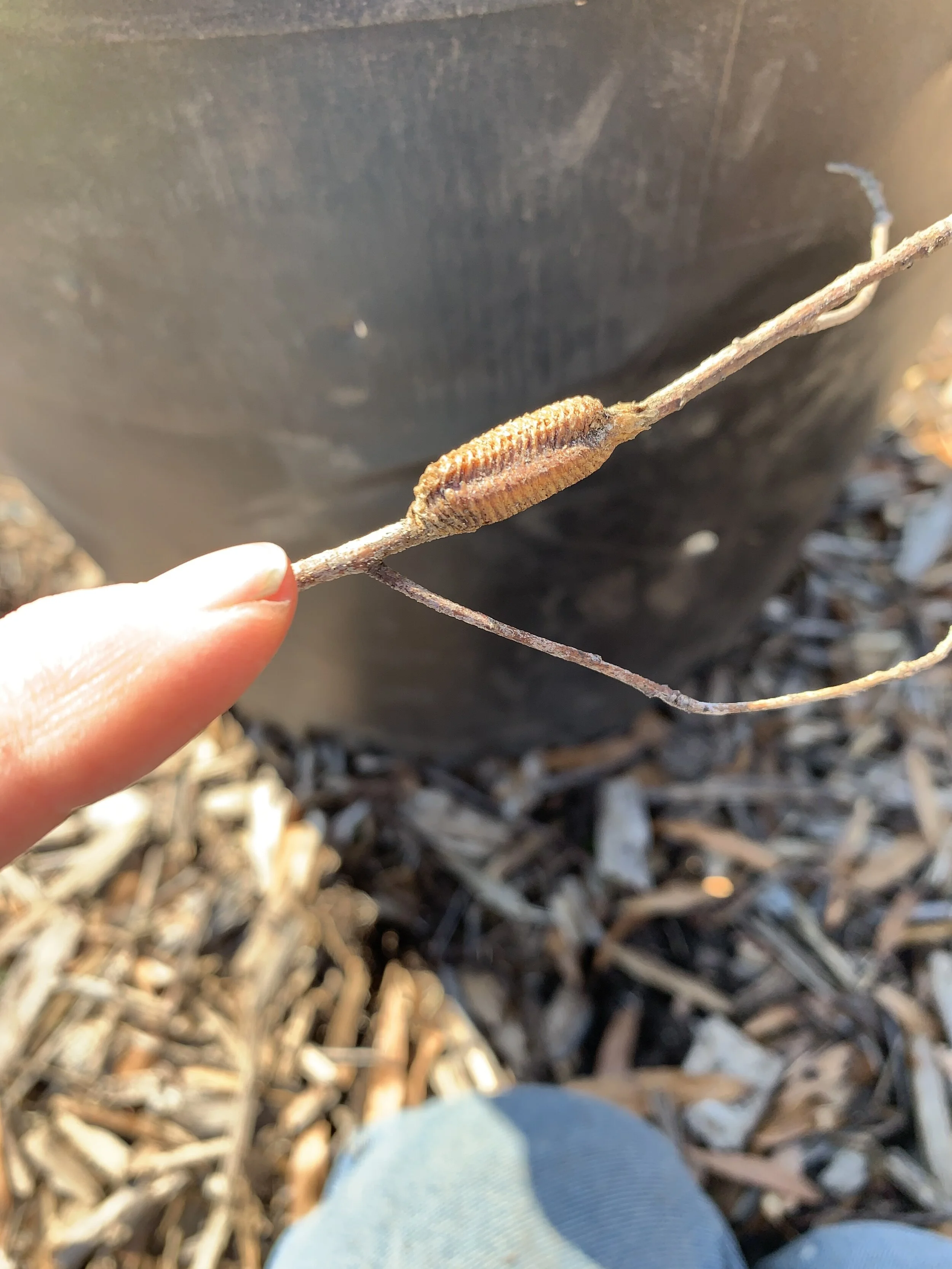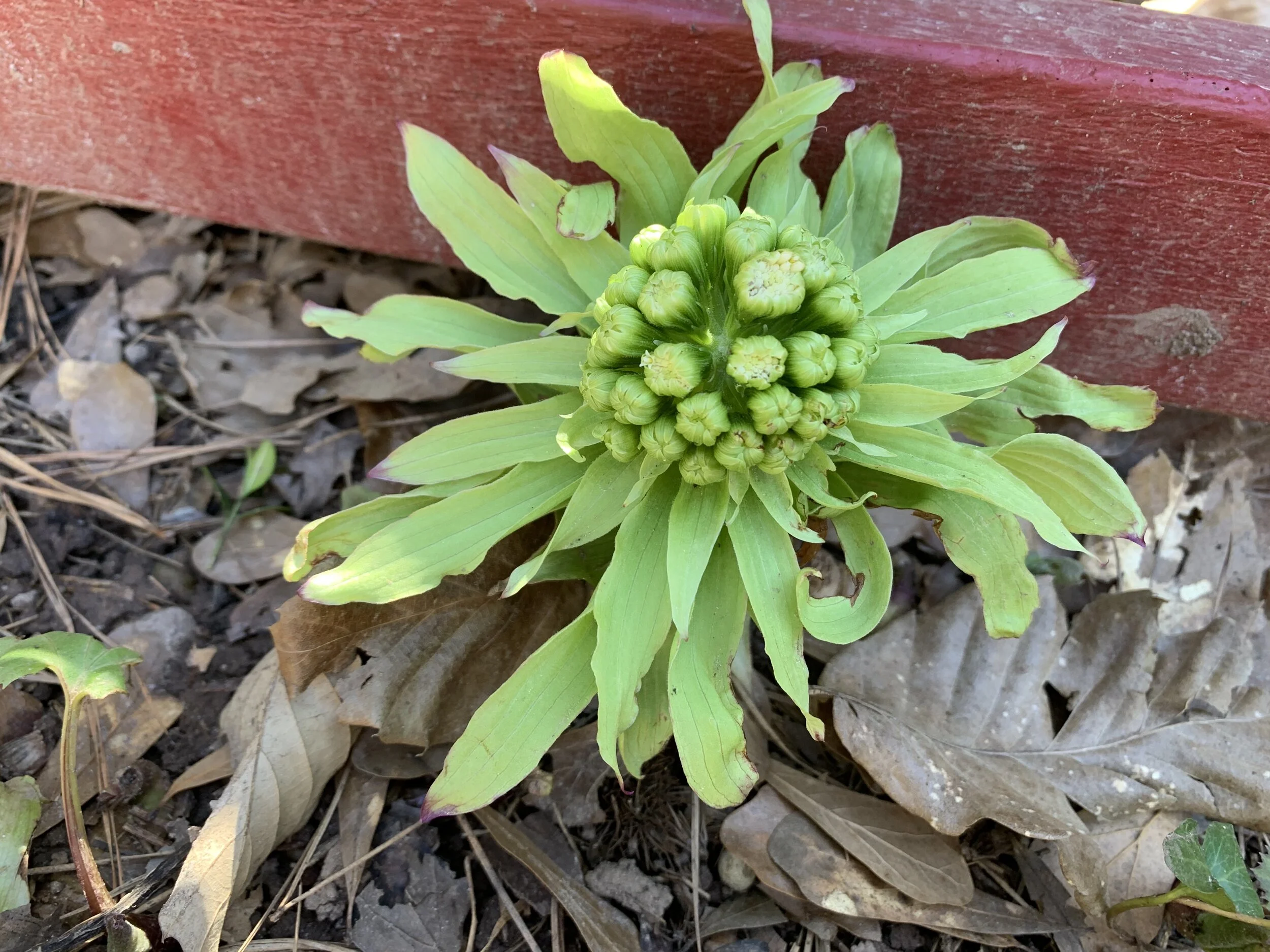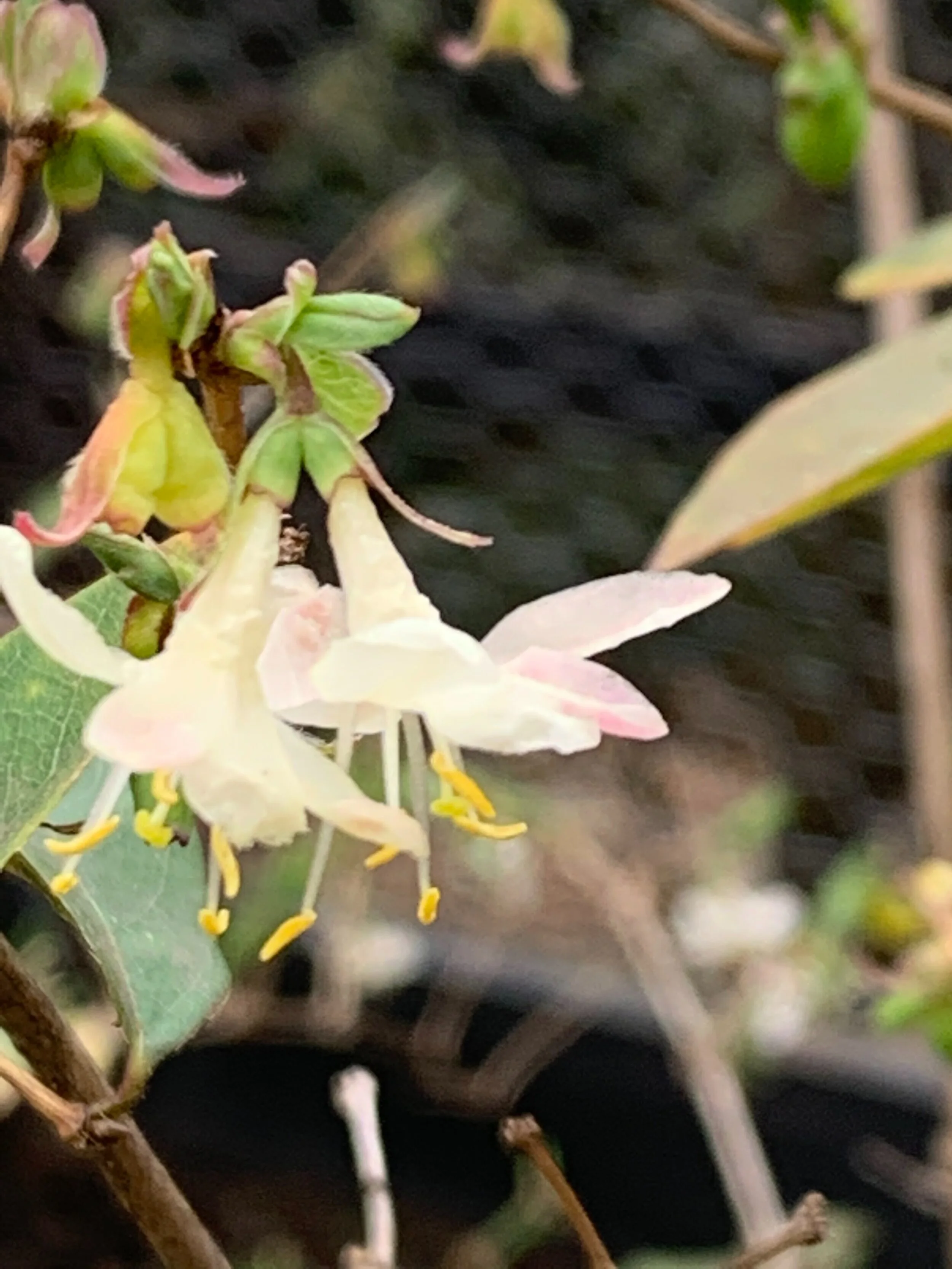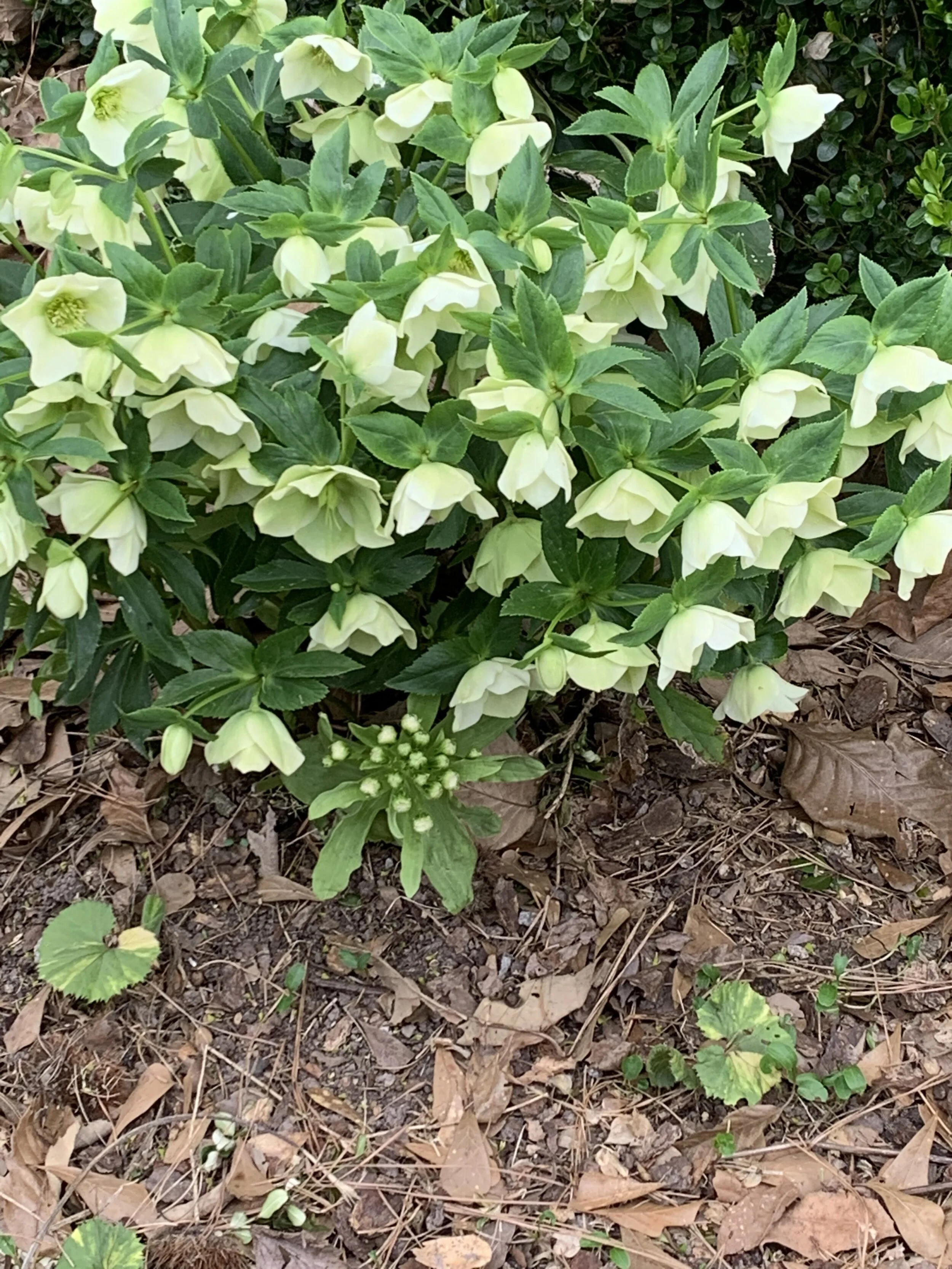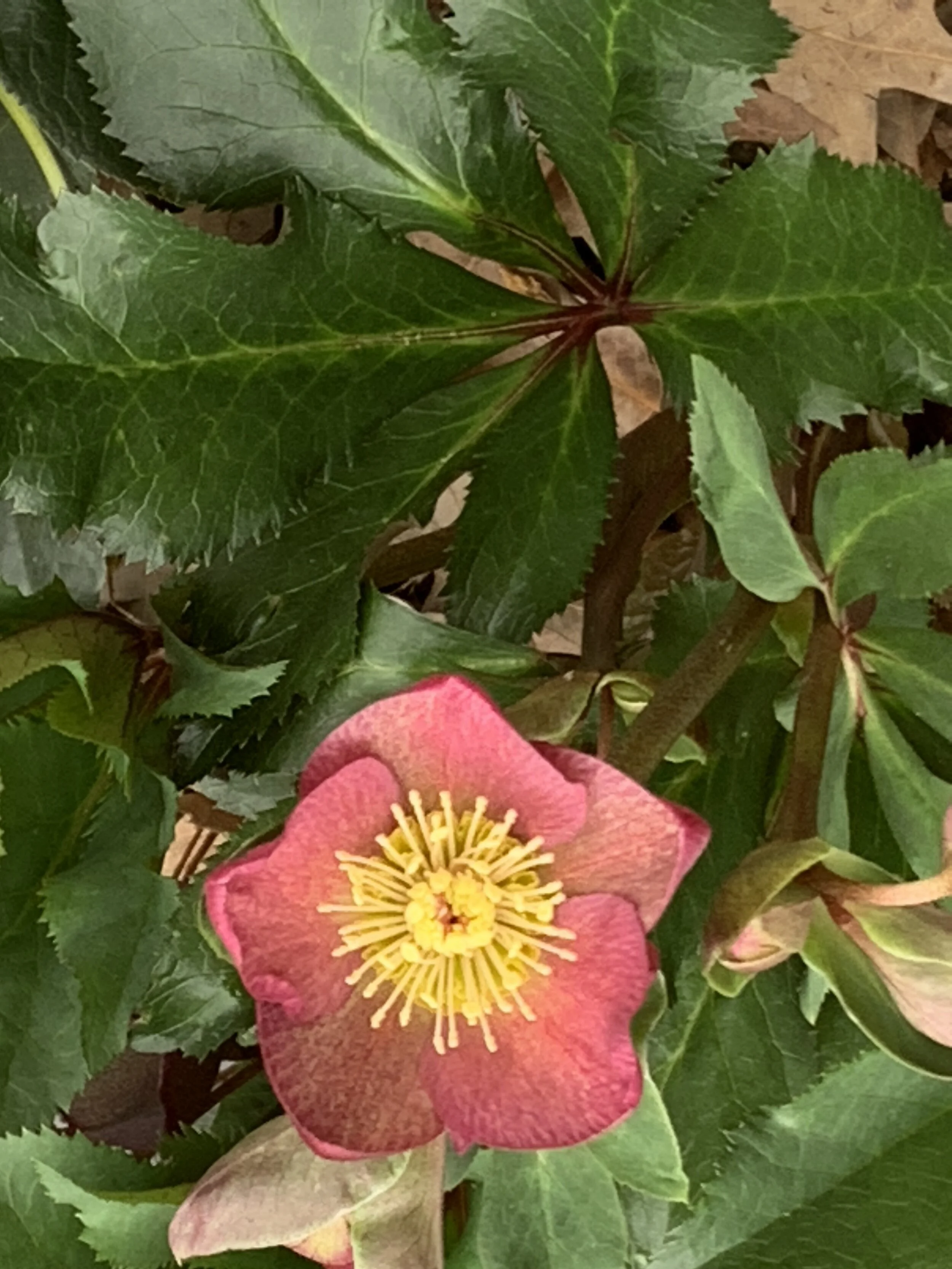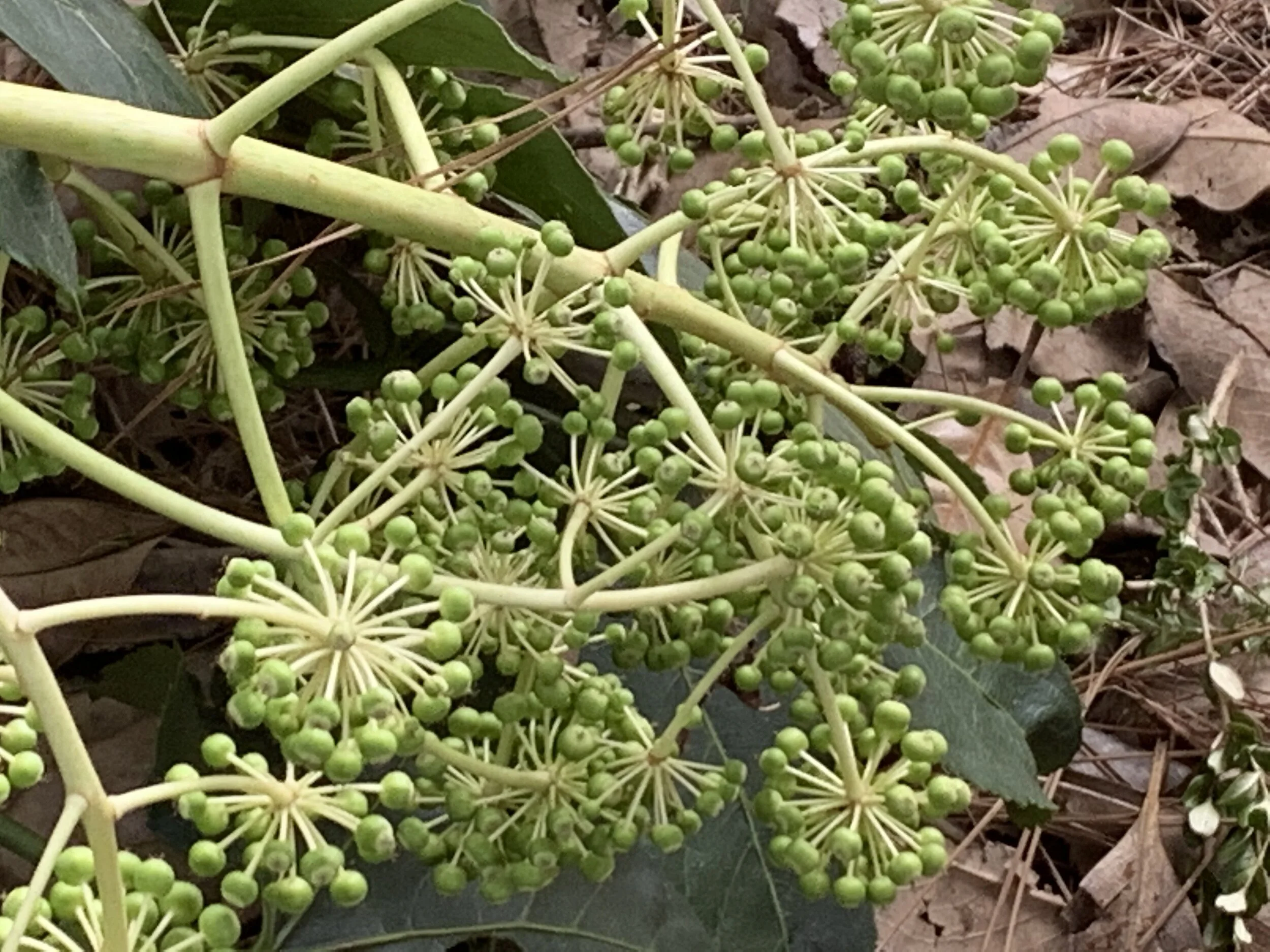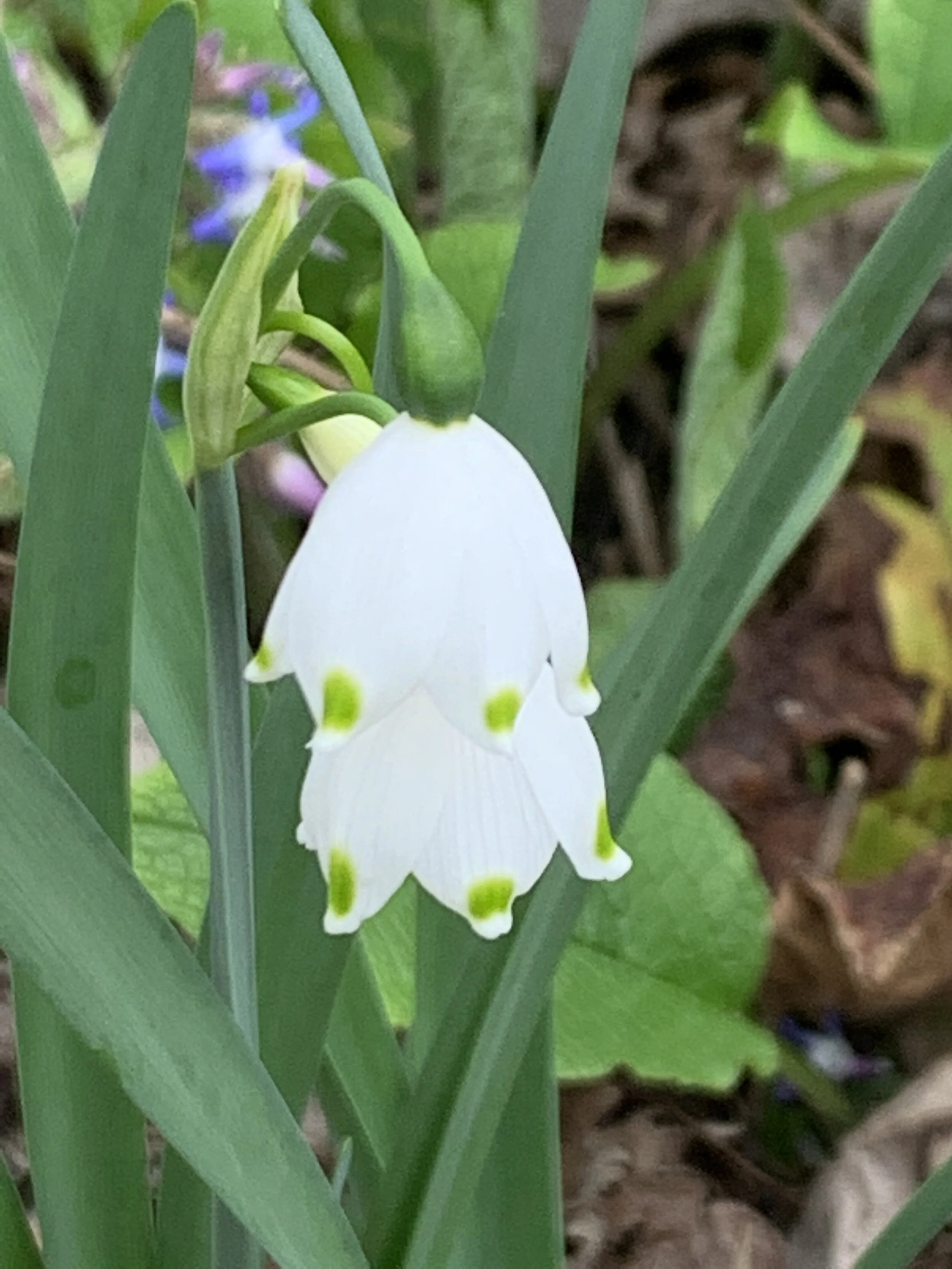My friend, Garry, sent me this!
I’ve been busy in the garden during February. Freshening up is how I would put it. As you saw last month, I added new rock to the Rock Garden, and I also added it to the gazebo. It’s been a long time. I also need to do the Southside path. I need to look for some energy before I can make that happen. I agreed to do an open garden for the Rock Garden Society. I’m not doing this rock fresh for that, but it will add value during the opening.
All this freshening up continues through March. My goal is to have all freshening up chores done by April 1st.
Cornus mas, February 20, 2022
GARDEN TASKS
1) Fix gate in the Back 40(ft.) —I learned BBN’s perspective Eagle Scout his troop will fix the gate while the Air Bee N Bee is being installed.
2) Rid all fig buttercup, Ficaria verna. I’ve been going after it since it arrived about four years ago. I have been doing this weekly, through February even, to rid it as soon as it shows a glossy, round leave.
3) Cleaned up the Southside. I cleared out shrubs that were there to make room for the Air Bee N Bee my prospective Eagle Scout, Leo, will make for his project. It’s also a better view for the cameras. I’m happy with how it looks!
4) Trimmed back Lady Banks rose. Cleaned up the Corner Garden in general.
5) Reduced the number of ‘Black and Blue’ salvia near the pond.
6) Added composted leaf mulch from the City of Raleigh to that area.
7) Removed blackberries and arum from the south side to pot up for the plant sale in April.
8) Put up cranberry viburnum, Viburnum trilobum, for the plant sale in April.
9) Moved a holly from one area in the Southside to another but in the same area.
10) Cut back boxwood hedge. I do this annually. Rack up clippings and put them in yard waste bags.
Front- Takes right at one hour, and 4-yard waste bags.
Side - Takes 20 minutes, and 1.5—yard waste bags.
Back
11) Level and lift the rest of the stepping stones.
GARDEN UPDATE
The Back 40 (ft) Nothing needs to be done in this area for March
Gazebo Corner Nothing needs to be done in this area for March.
The Epimedium Patch Nothing needs to be done in this area for March.
The Wildflower Patch Nothing needs to be done in this area for March.
The Wildflower Patch Extension I’ll move the Galanthus spp. from the front parterre to this area.
The Southside Will prune back the hardy kiwi vine, Actinidia arguta.
The Ostrich Fern Garden Nothing needs to be done in this area for March.
The Front Fountain Garden Nothing needs to be done in this area for March.
The Food Forest Mostly weeding. The henbit is running rampet
Food Forest Expansion Nothing needs to be done in this area for March
The Front Beds plus The Parterre Weed, weed, weed.
The Raspberry Patch. Cut back canes. Trim back muscadine
The Pollinator Garden Nothing needs to be done in this area for March.
The Blackberry Patch Nothing needs to be done in this area for March.
The North Side Will cut acantha, Acanthus mollis, back, There were hit by the 20-degree weather we had. Otherwise, the foliage was still green!
The Girl’s Garden Nothing needs to be done in this area for March.
The Wildlife Pond I need to pick up some flagstone to surround the plastic liner.
The Mixed Border The weeds are under control. I need to do some cutbacks and mulch.
To read more of my writings, click HERE!
SCROLL TO THE END TO SEE WHAT’S IN BLOOM!
Have a Gardening Need? HIRE HELEN!
My friends, Beth and Suzanne at the Fearrington Fork Art show 2022
Each year, unless covid, my friend beth and I attend the Fearrington Folk Art sh
I got the solar lamp at the 2020 show and the green cricket on 2-19-20
SUSTAINABLE GARDENING STEWARDSHIP:
There are many definitions of sustainable gardening, and through my decades as a sustainable gardener, I’ve summed it up to mean…wait for it…a garden that sustains itself and the life within! By that I mean, doing less, so much less, that it can take away the stress and much of the labor, bringing back the joy of gardening and bettering the environment.
Sustainable gardening is a concept of using gardening practices that cause no harm to the Earth and its inhabitants while working in a way to enhance it. But there is more. To me, sustainable gardening is to have within all the aspects to sustain life. For example, to have a butterfly garden, it’s not enough to just have pretty nectar-rich flowers. For a butterfly garden to be fully sustainable, plants are required to sustain all aspects of the butterfly’s life cycle. That means providing host plants, specific plants that area butterflies need to lay their eggs. So yes, you will have holes in your leaves; that’s the goal!
Simply put, sustainable gardening is designing your garden to sustain itself and allows us to secure our future to make the Earth better than we found it. Think of it as organic gardening taken a step further.
Design becomes an important aspect for a garden to sustain itself, as well as providing the plants necessary to fully sustain wildlife in all respects of their lifecycle. You could just plant plants that are regionally native and provide exactly what nature does. No supplemental water, no cutbacks, no added mulch, and no pesticides or herbicide. Yet, many want more from their gardens, so we add plant diversity. What is key is the placement of these plants.
SOIL
FERTILIZING SUSTAINABLY
WATERING SUSTAINABLY
WATERWISE
WILDLIFE
CREATING A WILDLIFE HABITAT AT HOME
FOOD:
Our bird friends don’t need supplemental feed if you have a diverse garden. but we begin to heat up, keep up the feeder so you can watch your feathered friends from the inside of the home..
One of the best all-around seeds for birds is the black-oil sunflower. This seed has a high meat-to-shell ratio, it is high in fat, and it is sized perfectly for many seed eaters, including black-capped chickadees, cardinals, mourning doves, finches, juncos, jays, woodpeckers, and sparrows.
COVER:
Wildlife welcomes cover, year-round.
WATER:
As the berries in our area ripen, the birds are having a feast. Keep your birdbaths filled with freshwater, changing out at least every four days to break the mosquito larvae cycle.
PLACES TO RAISE THEIR YOUNG:
Plant diversity is key!
BIRDCARE:
Do you deadhead? Click HERE to learn more.
Check out this really nice bird identification and preferred foods for each bird from The Cornell Lab! Click HERE!
Are you familiar with how we can bring the birds back? Click HERE for starters.
As long as you are enjoying seeing the birds from your window, continue to Feed The Birds!
I also fill wire suet cages with native grasses.
HUMMINGBIRD UPDATE:
Click HERE.
INVASIVE PLANTS:
Invasive Plants:
By definition, did you know there is a different meaning between invasive plants vs. aggressive plants? A simple definition, invasive plants are introduced species, not native to our area, and show a tendency to spread out of control. Aggressive plants are those native to our area, and some can easily take over. We in. The Bee Better Teaching Garden keep an eye on both!
Clover
We don’t all think of clover as a weed. I certainly don’t! Do you think white clover is a weed? Think again. if you are one of the ones who want it gone in your turf, click HERE.
You may know pokeweed as American pokeweed, poke sallet, or dragonberries. All parts of the plant are poisonous, except when the foliage is about the height of a spread hand. Then it can be boiled with two water changes and eaten like cooked spinach.
The berries are highly desired by birds in the fall, and this helps the spread of pokeweed as they drop the seeds—everywhere! After consuming the berry, the seeds are spread by birds and frequently are found around the driplines of trees, shrubs, and along fencerows, and a massive amount around the plant.
If left too big, they can be hard to remove since they have a deep taproot. Try to note and remove seedlings early for an easier pull.
Pokeweed shoots can be composted in cold piles if berries are not present. Roots should not be added to cold piles, either. We cold compost in the Bee Better Naturally Teaching Garden. Cold composting is essentially letting a pile build and decompose.. It requires less effort from the gardener, yet the decomposition takes substantially longer—a year or more. We have a designated area behind some shrubs where we pile our biomass to slowly break down.
I thought you might be interested in learning how the dreaded Bradford pear had its beginning.
Lesser Celandine or Fig Buttercup, Ficaria verna
Creeping Charlie, Glechoma hederacea
Greenbriar, Smilax rotundifolia
Hairy Bittercress, Cardamine hirsura
Marsh Pennywort, Hydrocotyle sibthorpioides
GOOD BUGS:
An Introduction of Green Lacewings
Mysteries of the Dragonfly and Damselfly
BUTTERFLY UPDATE:
I’ve seen a few, but this oh-so-nice spring, they are slow to arrive full force. Recently, I registered the Bee Better Teaching Garden with the Rosalynn Carter Butterfly Trail. Have you looked into this?
We offer Caterpillar Support to those who are in need of butterfly caterpillars rescued. If you have butterfly caterpillars and are running out of host plants, or if you don’t want your plant defoliated, just email me at helenyoest at gmail.com. We can arrange for you to drop them off, and I will raise and release them.
Host Butterfly Plants
Bronze fennel is the host butterfly plant for the Eastern black swallowtail butterfly. The caterpillars feed on the fennel until time for the metamorphosis.
In our area, we don’t tend to see Eastern black swallowtails until a little later in the summer. But they will come. It’s not too late to plant their host plants. While they like fennel best, the caterpillars will also feed on curly parsley, dill, and carrot tops. To purchase the full list of host plants for butterflies within our Raleigh and Ecosystem 231, click HERE.
MONARCH UPDATE:
It is possible to see monarchs in the Raleigh area in the early summer, but we are more likely to see a bunch of them in the fall as they migrate south again. Have you planted your milkweed?
BAD BUGS:
Mosquitoes are out, these are buggers one never gets used to. Controlling mosquitoes with traps has been most helpful. To learn more, click HERE!
Tent Caterpillars
Leaf Miner Flies
Mosquito Control—Is there Such a Thing?
Naturally Controlling Japanese Beetles
Bagworms
Do yourself a favor and never look into the “eye” of a bagworm. Bagworms have got to be the most disgusting-looking pests ever — to me anyway.
Bagworms can be treated by removing them by hand and dropping them into a bucket of soapy water. If the bagworm infestation isn’t within easy reach, they can be sprayed with Bacillus thuringiensis or Bt for short.
Bt is a microbial insecticide that’s commonly used to control various caterpillars such as the red-headed azalea caterpillar along with many other caterpillars, as well as those nasty bagworms. But remember, it will kill our moth and butterfly larvae, as well!
Black Widowed Spider, Latrodectus mactanse
Cicada Killer, Sphecius specious
Japanese Beetle, Popillia japonica
Be sure to check them FIRST to see if they have any tanchid fly eggs on their shoulders. If they do, let them go and the flies will hatch out and consume them from the inside — and produce more flies to dispatch more Japanese beetles. If you see those opaque white dots — one or two or three or more — let them go.”
Brown Recluse Spider Loxosceles reclusa
CHECK OUT Bee Better Naturally’s HOW-TOS!
CHECK OUT our SHOP/WORKSHOPS!
SPECIFICALLY…
CAMELLIAS
LAWNS
ROSES
TREES: Check out the latest advice from Leaf & Limb!
Why Dead Wood is Good Wood!
The Art of Espalier
SHRUBS:
The best time to prune flowering shrubs is right after they bloom.
ANNUALS:
I don’t tend to plant annuals, but I’m big on direct sowing. Zinnia’s are my go-to seeds. There are tall ones, shorter ones, and even ground cover types. Some look like show mums others like pinwheels, and those that like daisies you will want to pluck to see of you if your love, loves you.
PERENNIALS:
Rohdea japonica is sending up new shoots. Now is a good time to cut back old leaves. Same with cast-iron plant, Aspidistra elatior. Cut back dead leaves to welcome fresh foliage.
BULBS:
Divide irises: Did you have success with your new iris planted this year or in the fall? If not, it could be due to several factors: too much shade, too much fertilizer, too deep a planting, or crowding. Now is a good time to correct any of these problems by lifting and relocating or repositioning to a more favorable location.
Plant the iris high with the rhizomes along the surface of the dirt. They can be covered finely and lightly with mulch, but not soil. Make sure you can either see the rhizomes or have the ability to brush away the mulch exposing the root. With the exception of the Louisiana variety, irises need six- to eight- hours of sunlight to bloom and require good drainage. If you have a damp, partial sun location in your garden, plant a Louisiana iris.
Camellias
Caladiums
VINES:
Virginia creeper, Parthenocissus quinquefolia. I find most people absolutely hate Virginia Creeper for the aggressiveness. I happen to find it extremely beneficial for birds in the fall. Did you know Virginia Creeper is a native?
Unfortunately, too many gardeners confuse it with poison ivy, Toxicodendron radicans, which is also a native and feeds birds. I get it. I’m highly allergic to poison ivy and have eradicated it from my property. I remember when I did so, I wasn’t allergic before but became so during its removal. The good/bad news was I did it all in one day, so I was affected even before the symptoms showed up! Otherwise, I may have stopped short of getting rid of it all, and being fearful my entire life in the garden! I had a rash from head to toe!!! It was then, in 1997, that I started wearing long sleeves and pants whenever gardening.
Crossvine, Bignonia capreolata; Lady Banks rose, Rosa banksiae; Carolina jessamine, Gelsemium sempervirens.
POND:
EDIBLE FOODS and FOOD FOREST:
Bee Better Teaching Garden grows at least 30 different fruits. Learn about our Food Forest HERE!
HERBS:
What’s looking good now in the Bee Better Teaching Garden:
Parsley, Petroselinum crispum-
Rue, Ruta graveolens
Thyme, Thymus vulgaris
Oregano, Origanum vulgare
Rosemary, Salvia rosmarinus, formally Rosmarinus Officinalis.
In the Food Forest, the rosemary has spider mites.
Without looking at this plant with a hand lens, it’s impossible to be sure, but this type of mottled leaves is typical of the damage done by either a sucking insect or spider mites. The leaves ended up stippled and paled with such infestations because the insect or mite pierce the leaf repeatedly as they feed, which kills the cells in the leaf. Initially, the leaves look stippled, but over time the entire leaf can die.
Leafhoppers, lacewings, and whitefly are three insects that suck plant juices and cause similar damage. If you look closely, or with a hand lens, and see webs, it’s likely spider mites are the cause.
Since most people want to eat their herbs, you, of course, don’t want to use systemic or other chemical insecticides. Also, mites aren’t killed by some insecticides. You could use one of the insecticide/miticides made from neem or cinnamon, however. Another good practice in such situations is to spray the plant with a hard stream of water once a week.
PERENNIALS:
Salvias
Foxgloves
Phlox
CHICKENS:
SNAKES: Wondering what snake is in your backyard? Click HERE for an easy id.
Glossary
Until soon,
Helen
#WeCanAllBeeBetter!
Marshpennywort, Hydrocotyle sibthorpioides
Native praying mantis chrysalis. Carolina mantis, Stagmomantis carolina
Japanese Maple ‘Empirer’
Hellebore hybridus, almost a clear pink
Hellebore hybridus, dark freckles
Osmanthus Fragrans. Not the best picture, but you can smell its sweet scent before your see it.
Petasites japonicus. ‘Variegata’. Can be invasive, but I have it in a place where doesn’t spread…much. I starve it of water in the summer. The variegata leaves flatten down, and it takes the wind out of its sails.
Winter honeysuckle, Lonicera fragrantissima. I understand in many mid-western states, this is a noxious weed. Fortunately, not so in the Bee Better Teaching Garden!
Shell pink, Helleborus hybridus
We have hundreds of daffs. Too many to photograph unless I was doing a book on them, and I’m not~
Pure white Helleborus hybridus
Celandine Buttercup, Ranunculus ficaria ‘Brazen Hussy’
Double Camellia japonica, variety unknown
From the leaves, this looks like its from the Helen Ballard Group of hellebores, Helleborus ×hybridus.
Lawn or common blue violets, Viola papilionacea, While a weed by many, I grow it because they are the larval they are the host plant for a wide range of butterflies known as fritillaries. including for the Edward's Fritillary butterfly, Great Spangled Fritillary butterfly, the Coronis Fritillary butterfly, the Mormon Fritillary butterfly, and the Variegated Fritillary butterfly, for which the Bee Better Teaching Garden has attracted.
Pipsqueak, Bergenia cordifolia. Did you know the common name is from the sound of two leaves rubbing together?
Illicium x Woodland ‘Ruby’
Ipheion uniflorum
Stachyurus praecox
Fatsia japonica
Lonicera flava
Pure white Helleborus hybridus
Interesting daffs
Lawn daffs
Leucojum aestivum
Bee on Peach, ‘Red Haven’
GLOSSARY:
Remember, if you are trying to figure out a horticulture word, you can reference the Bee Better Teaching Glossary. We have been adding to this for a decade now and have quite the list. Bookmark it for easy reference.
Until soon,
Helen
#WeCanAllBeeBetter!
